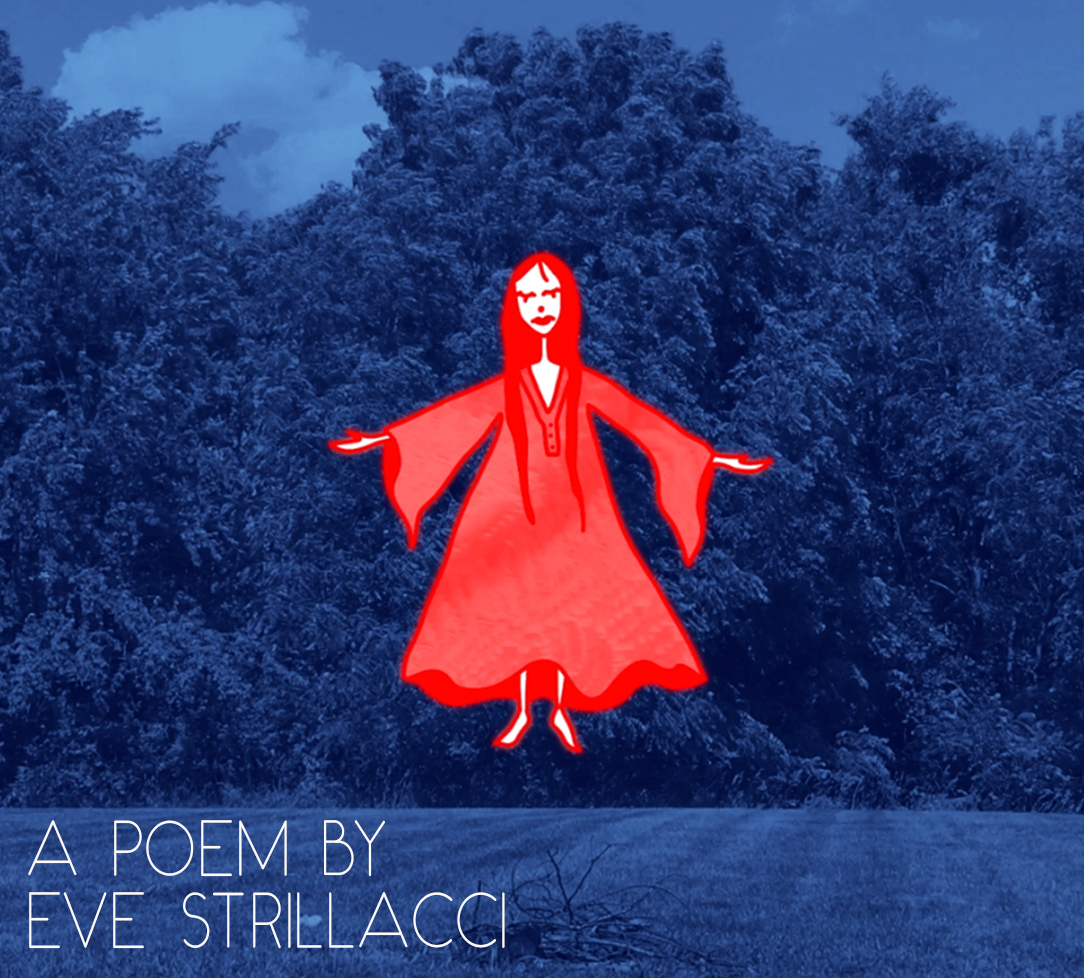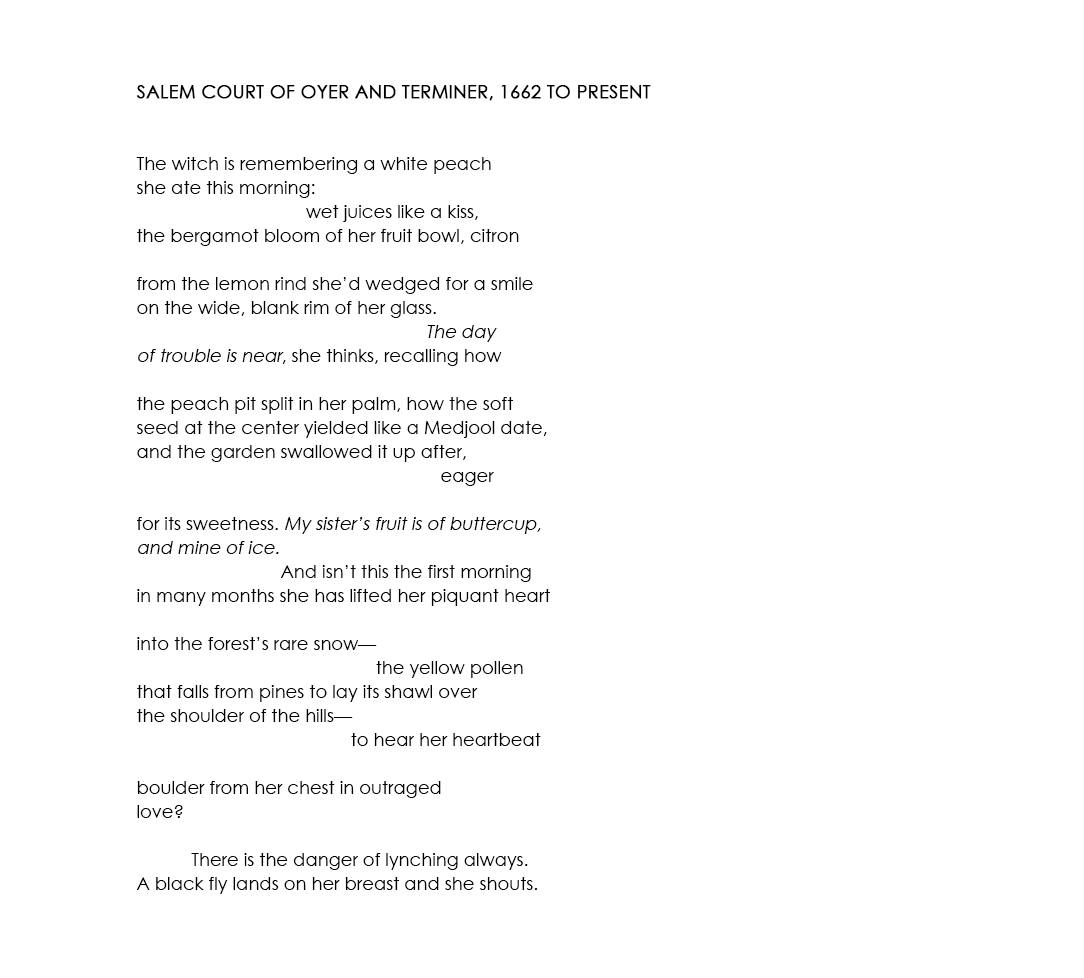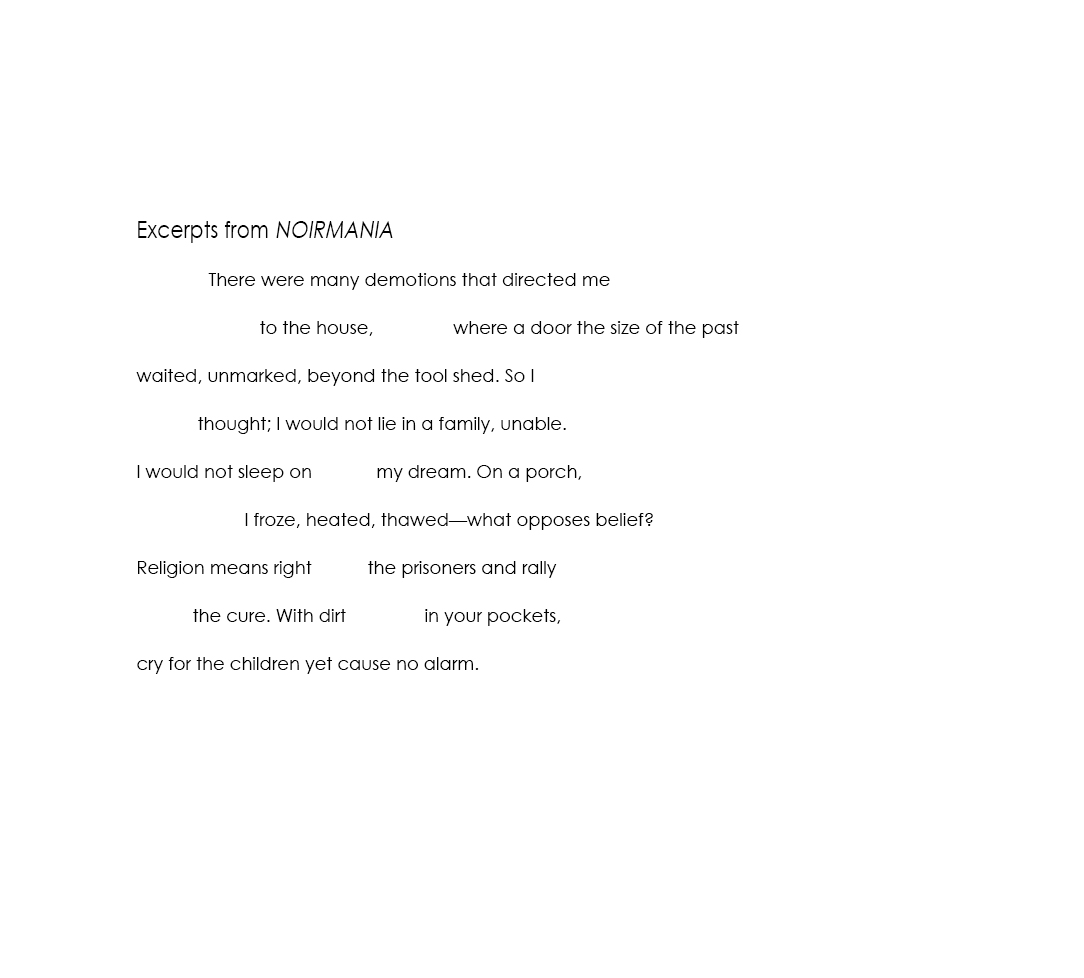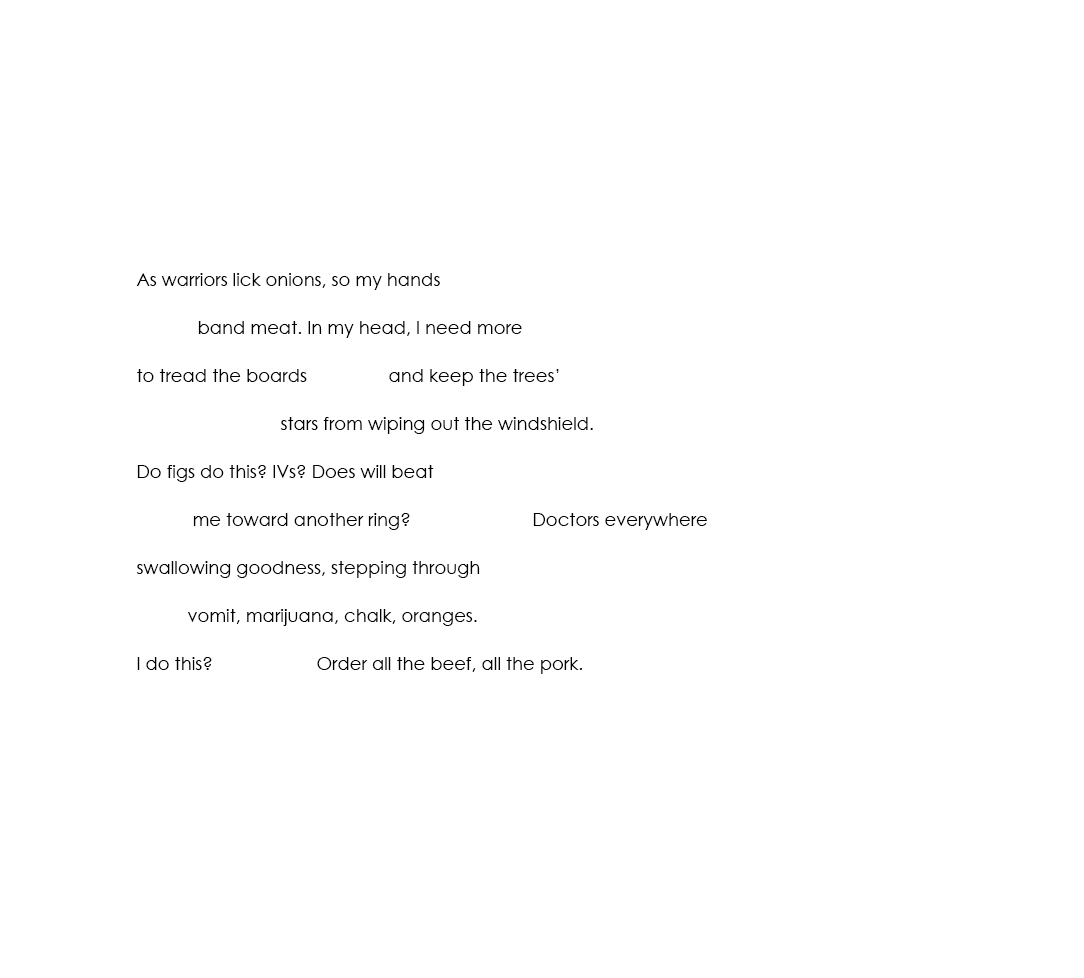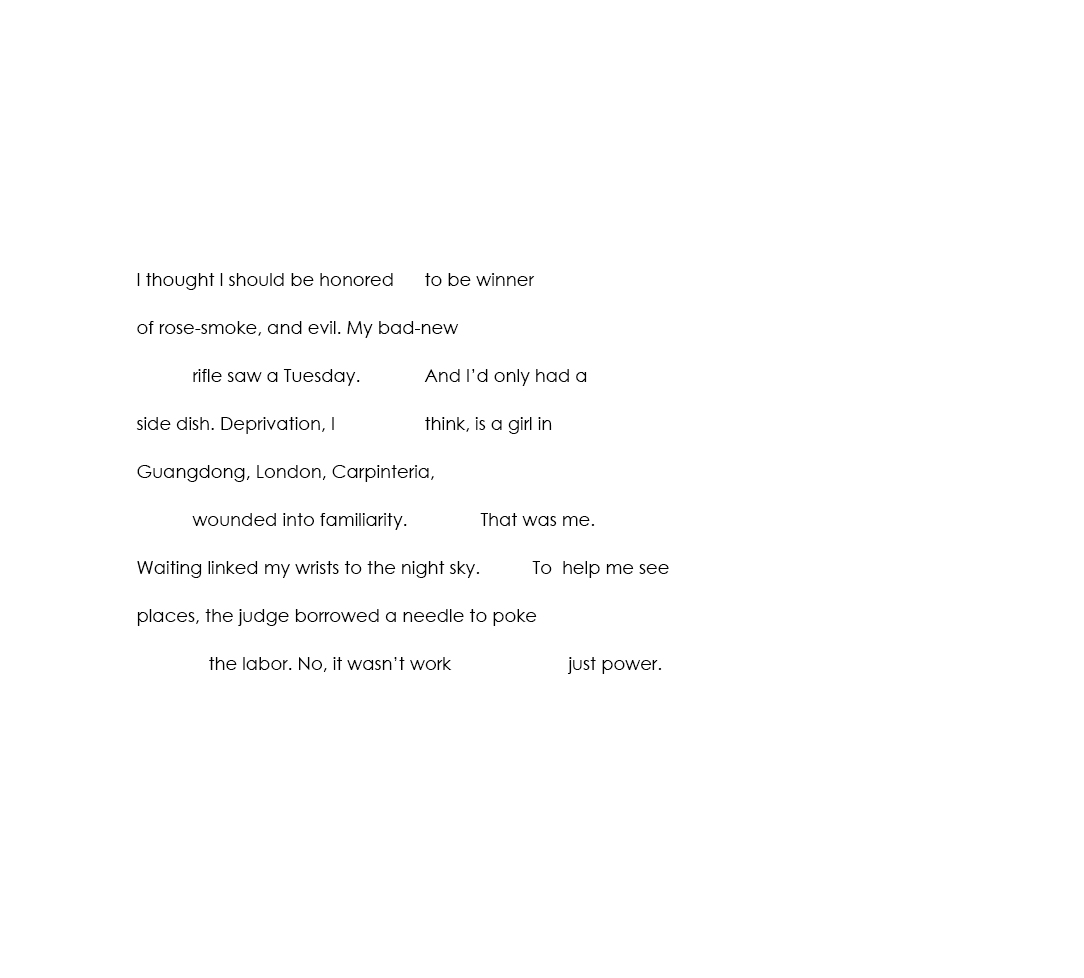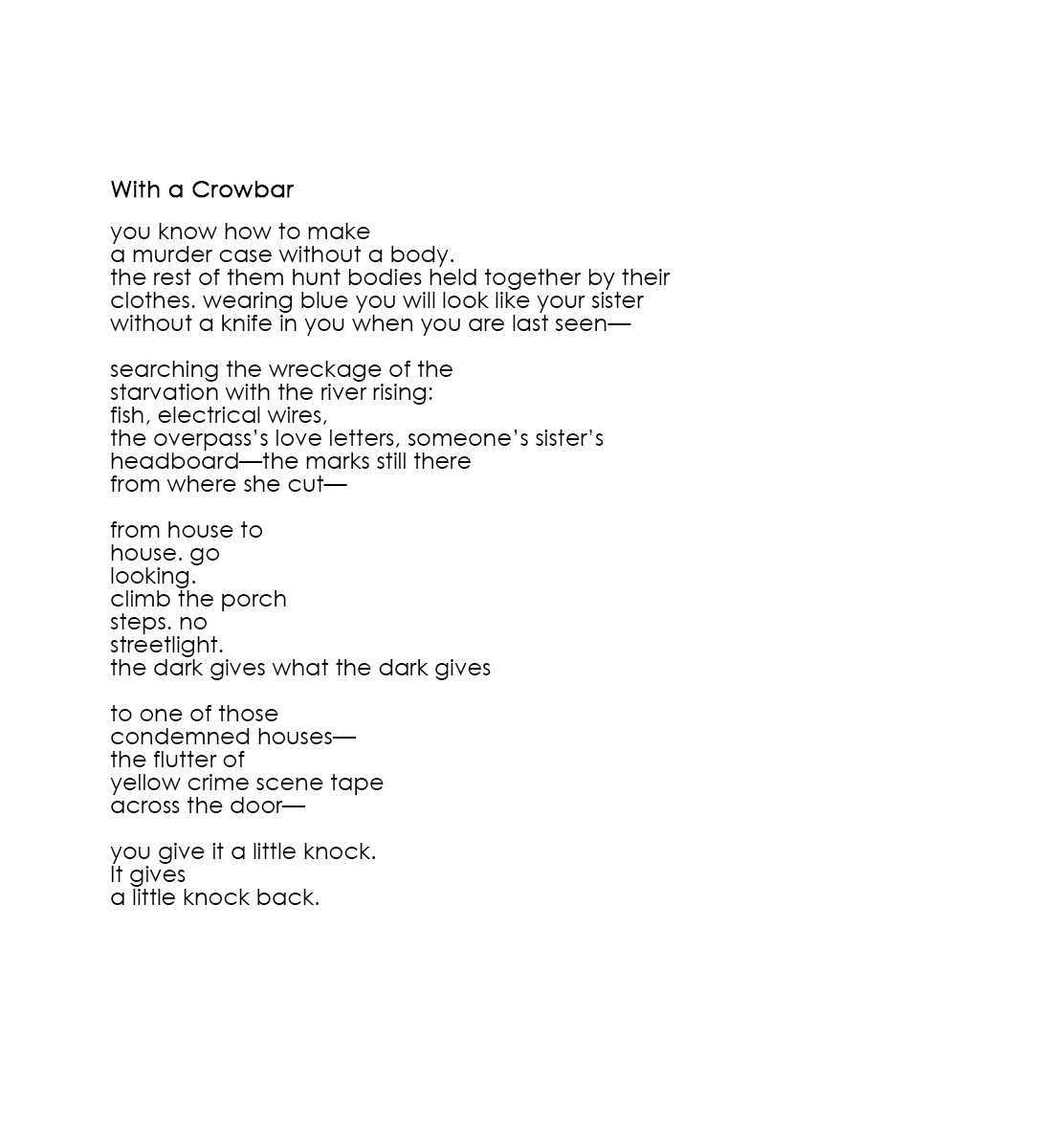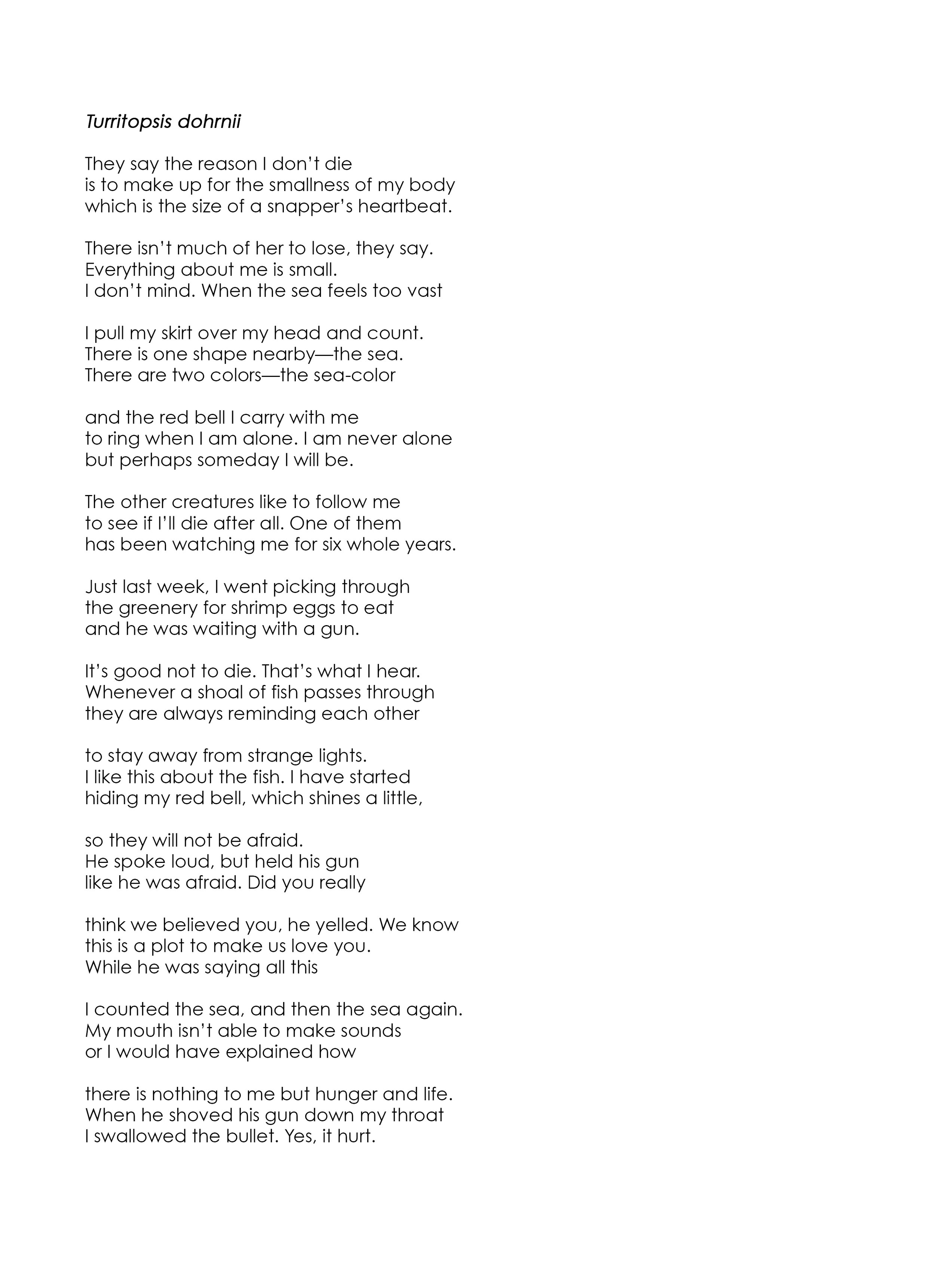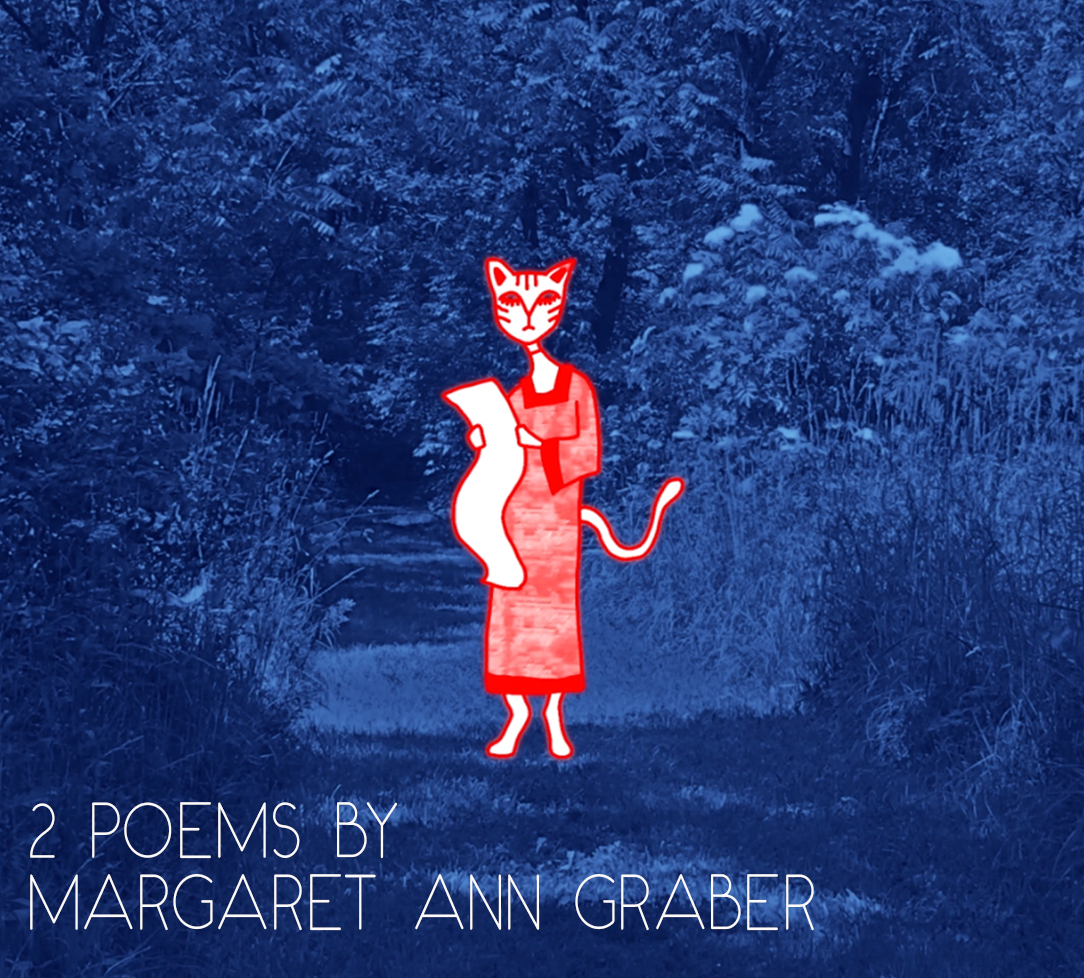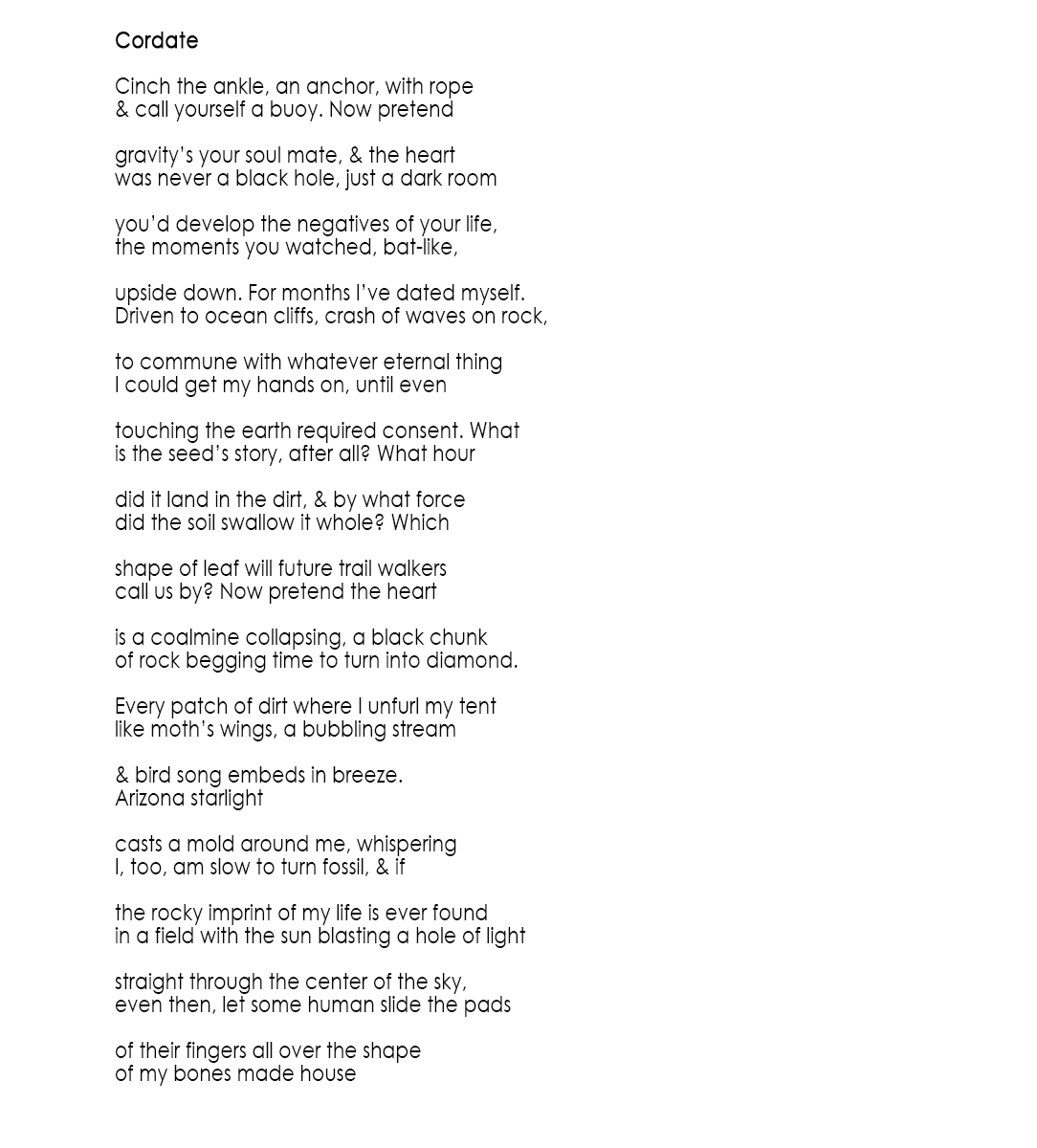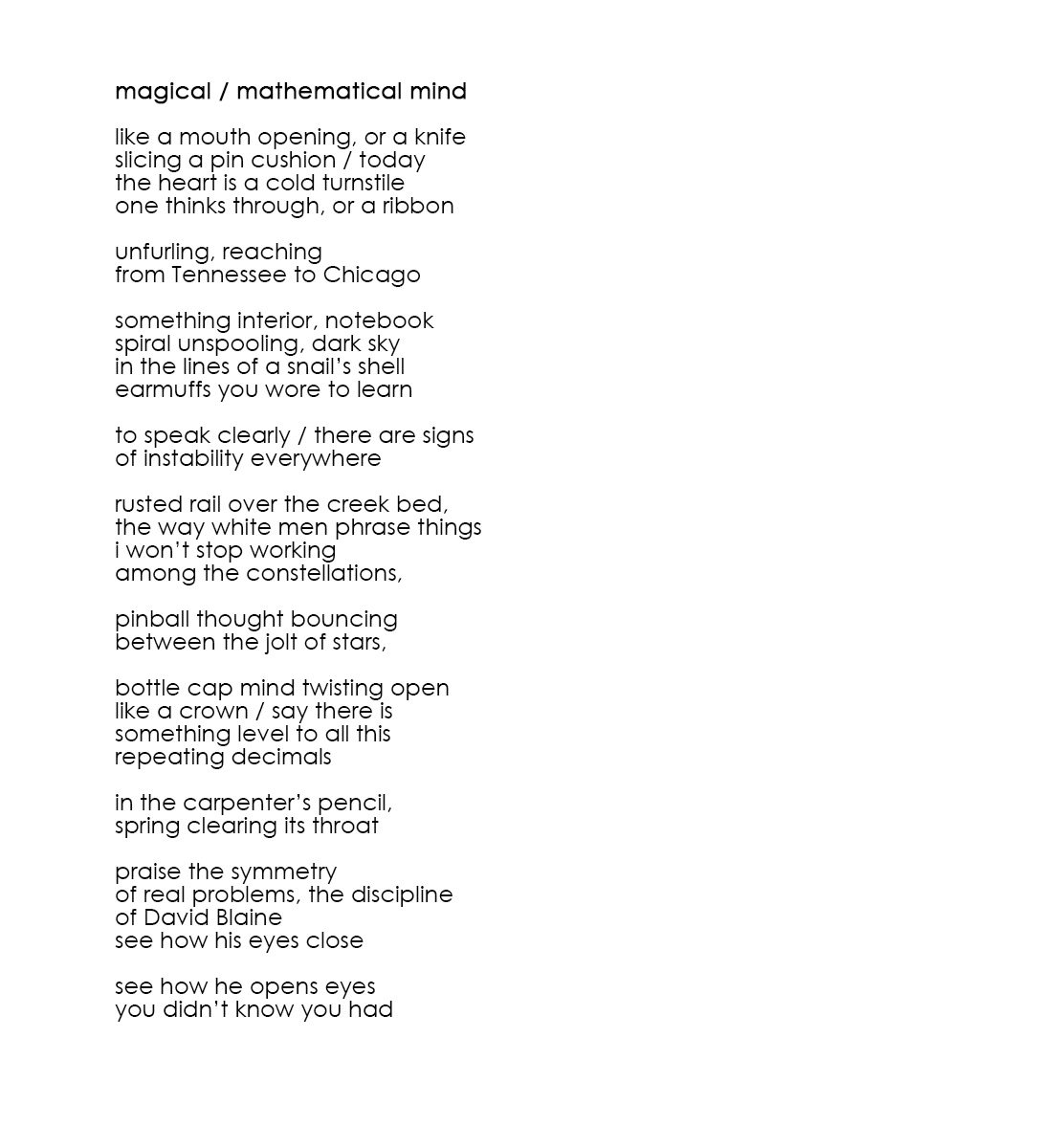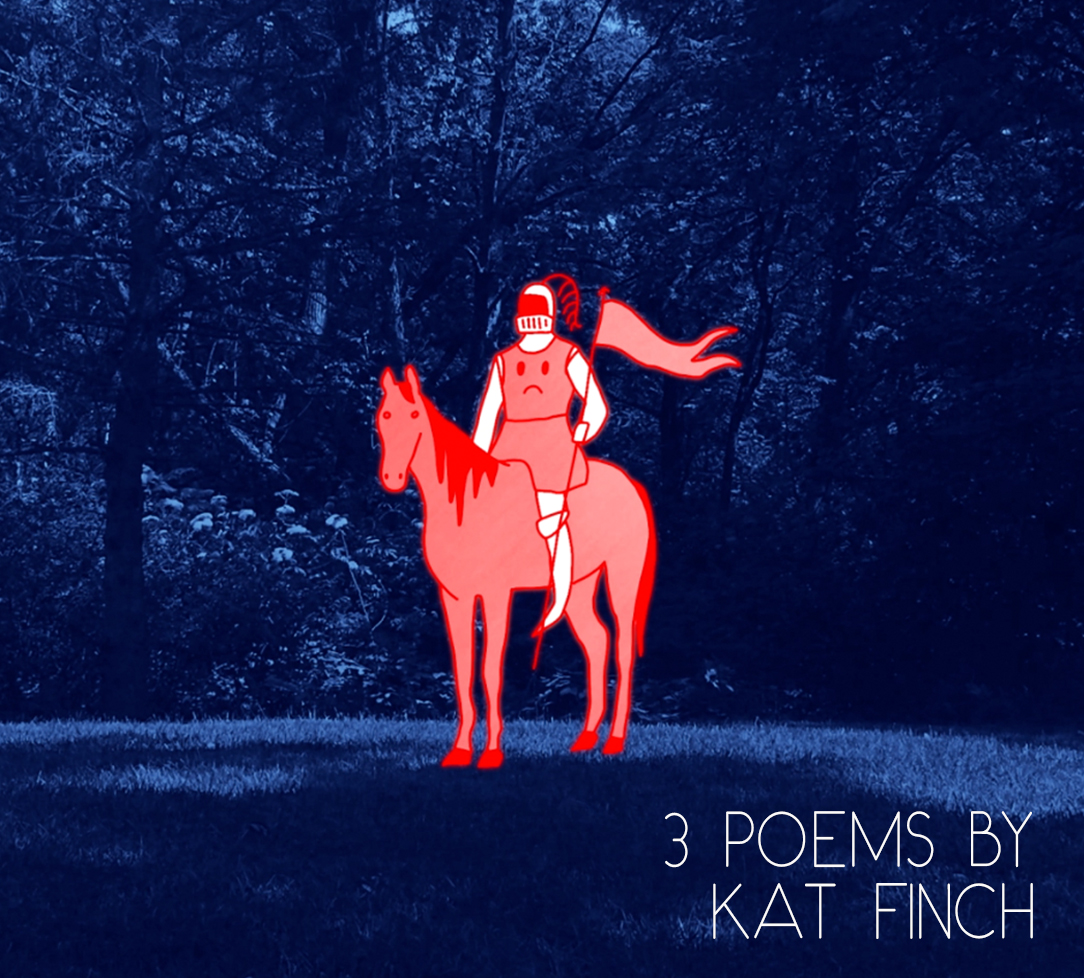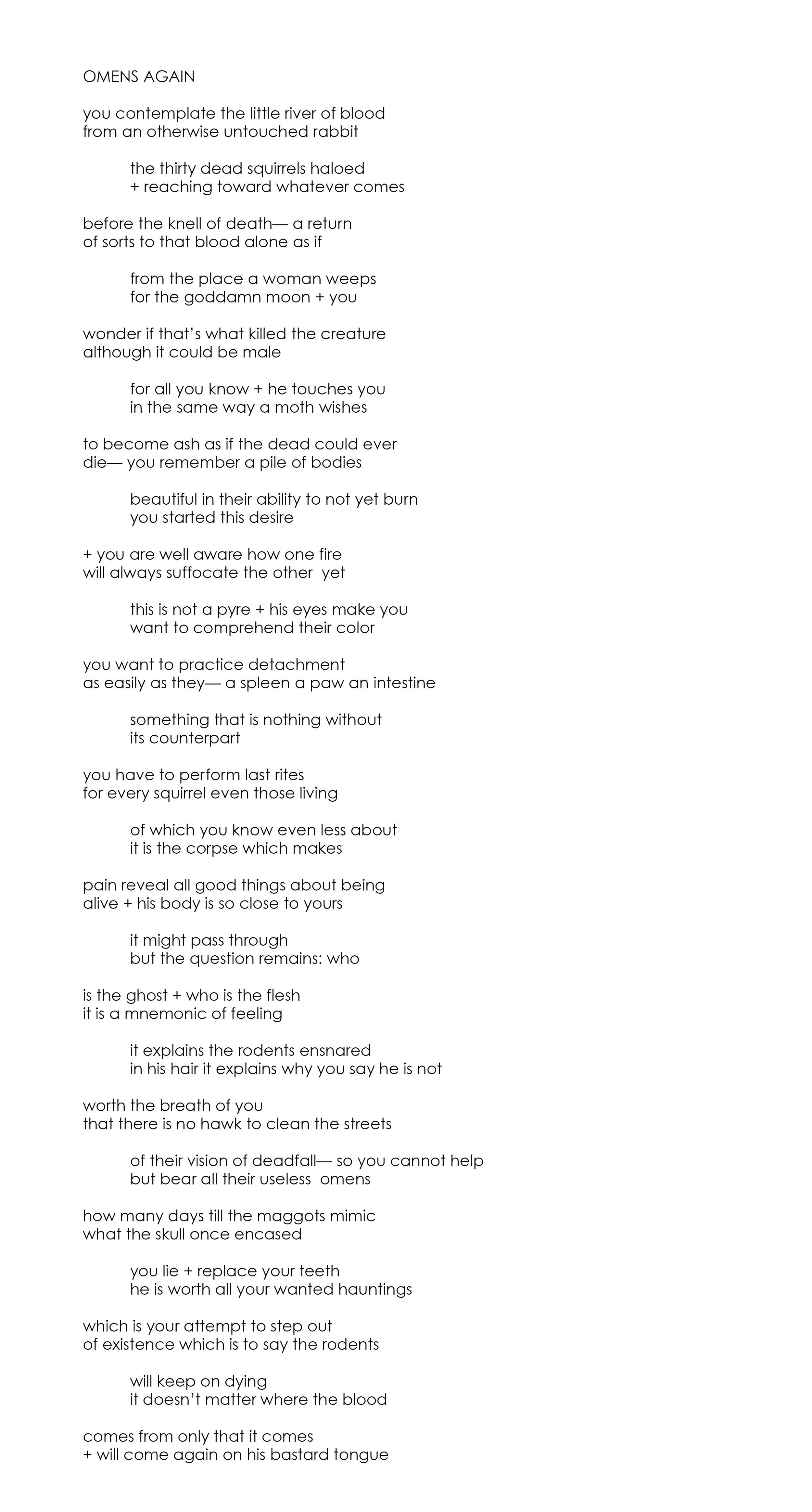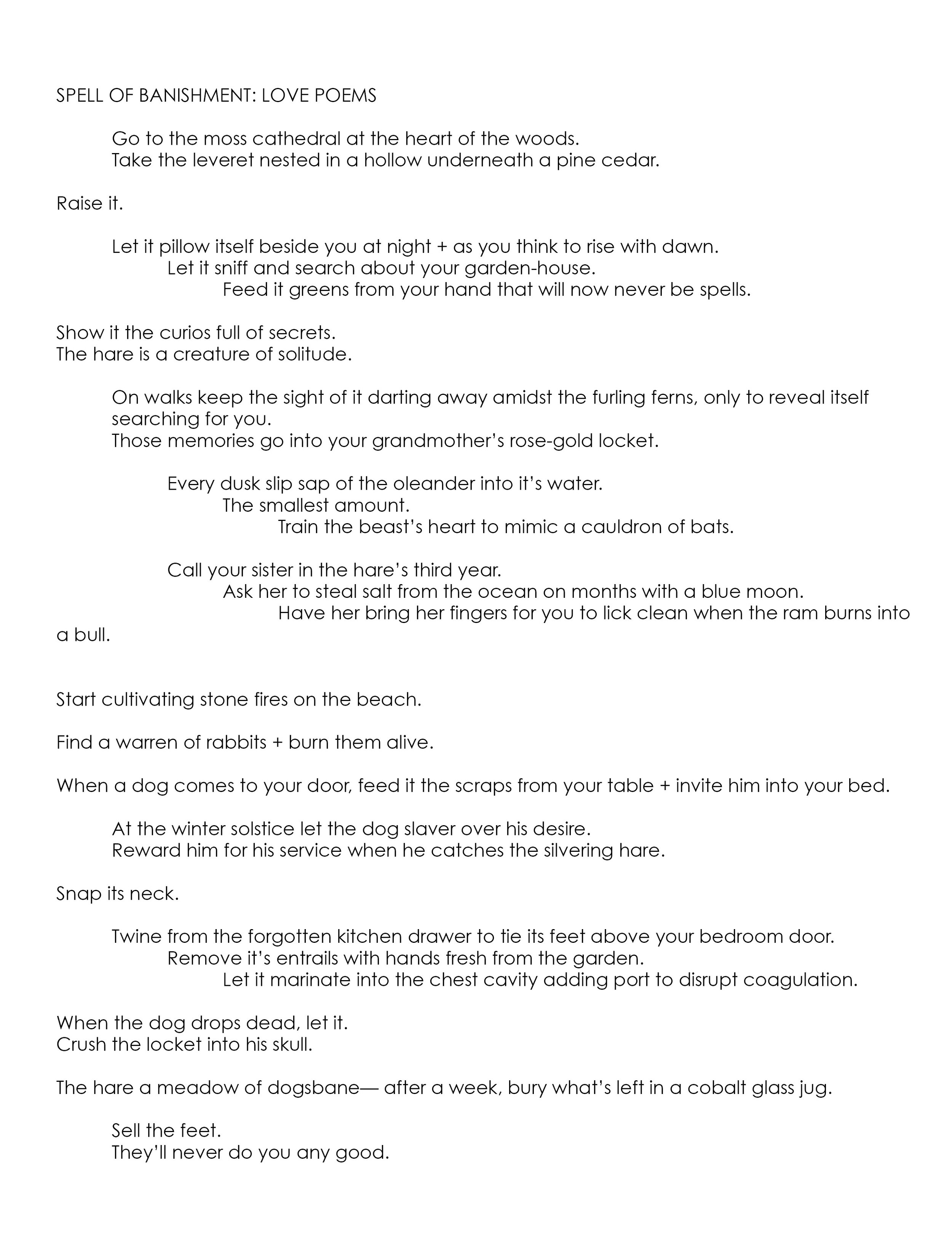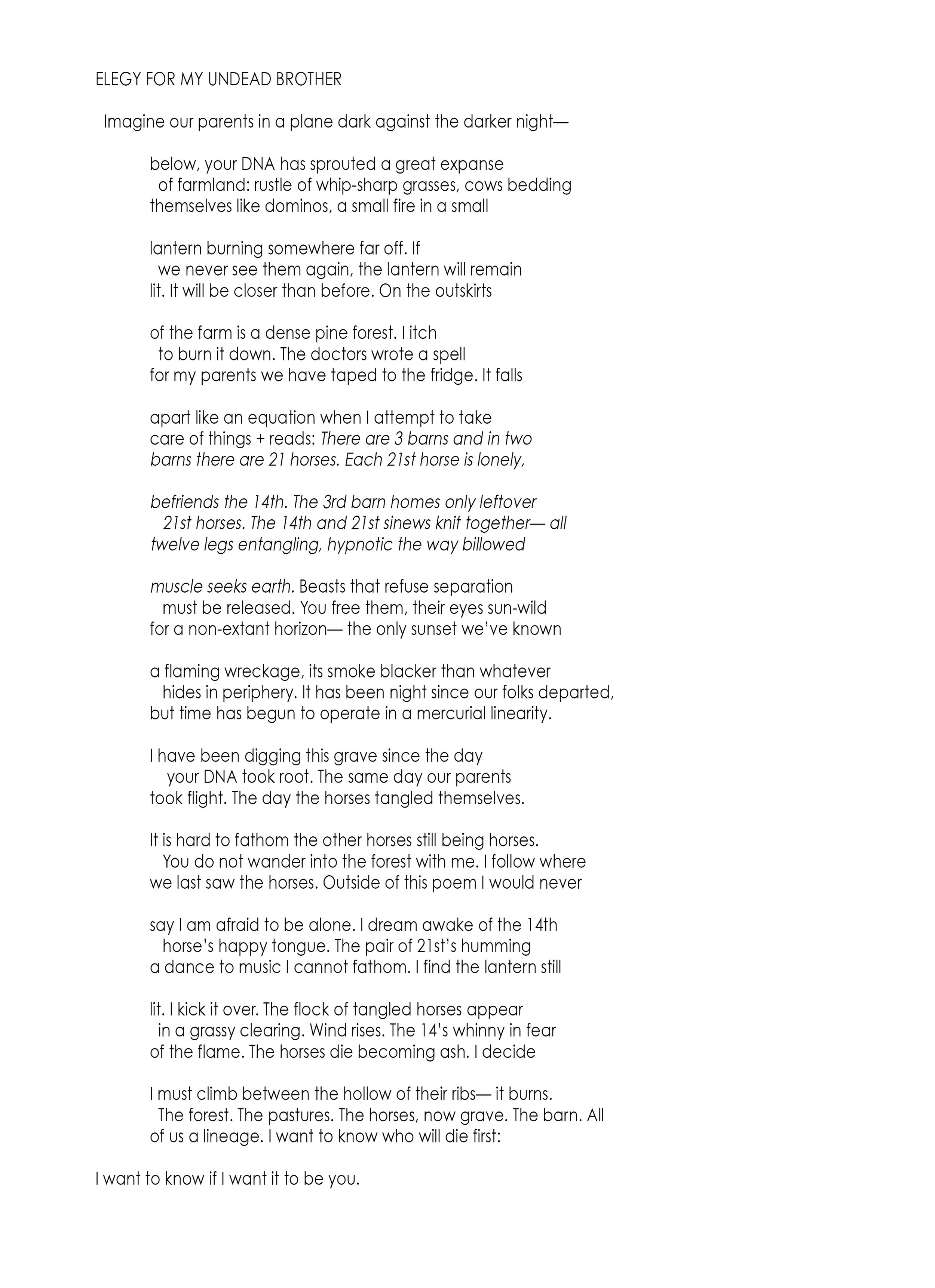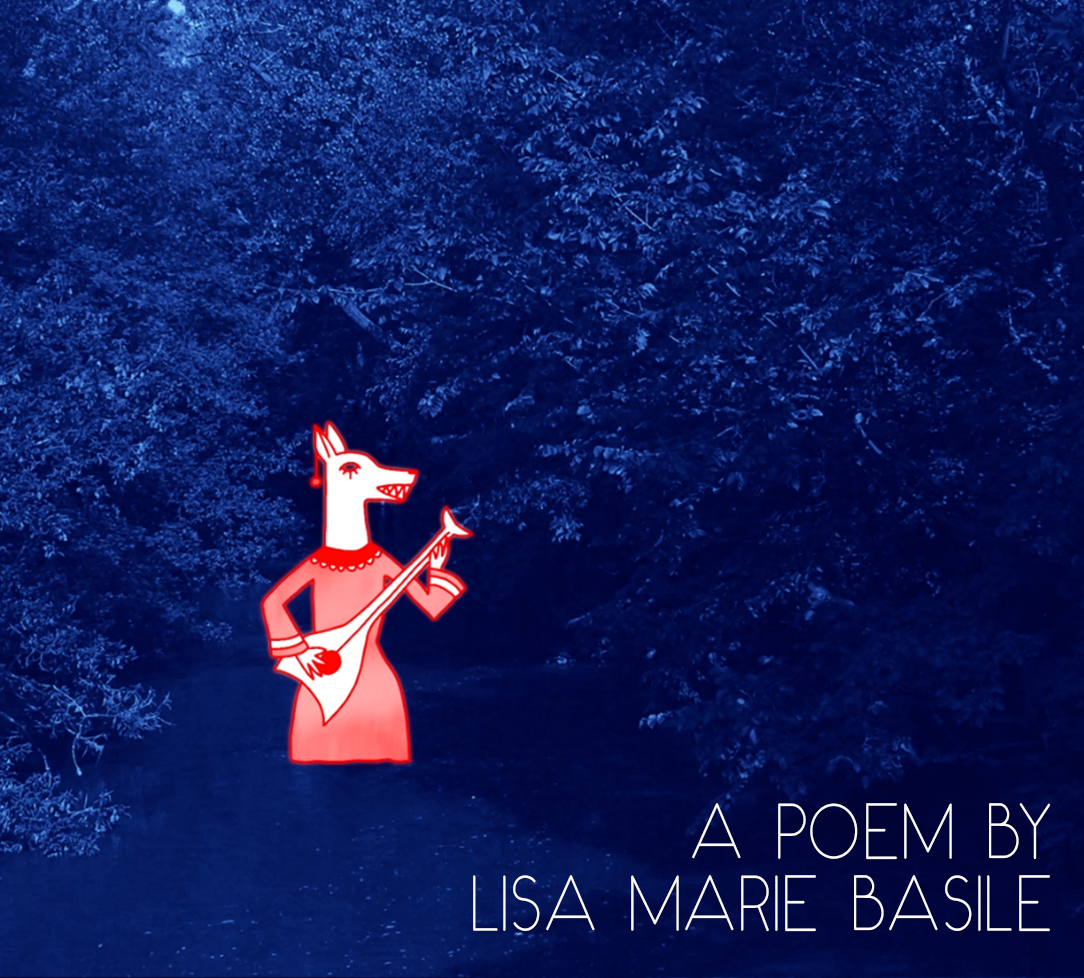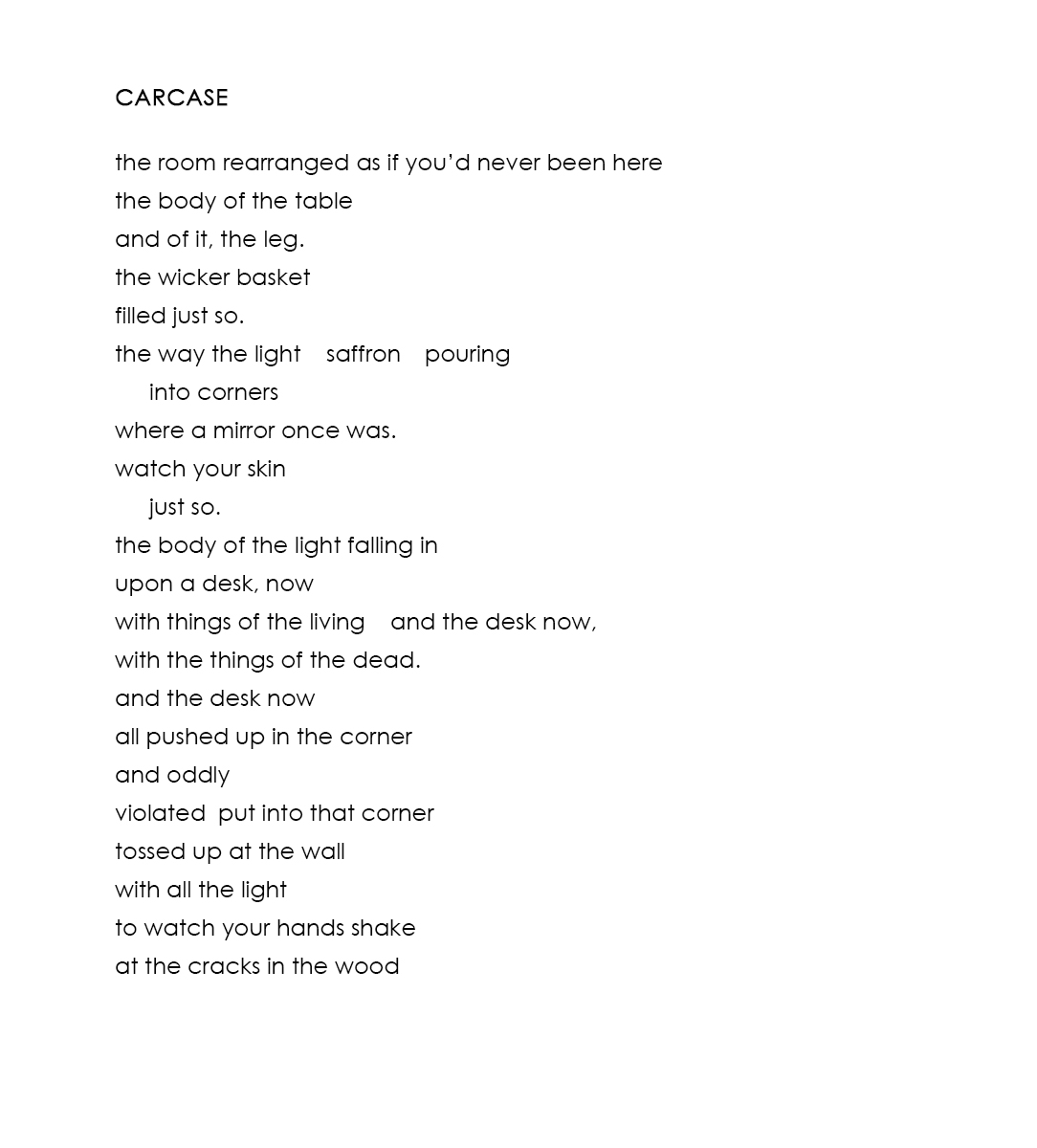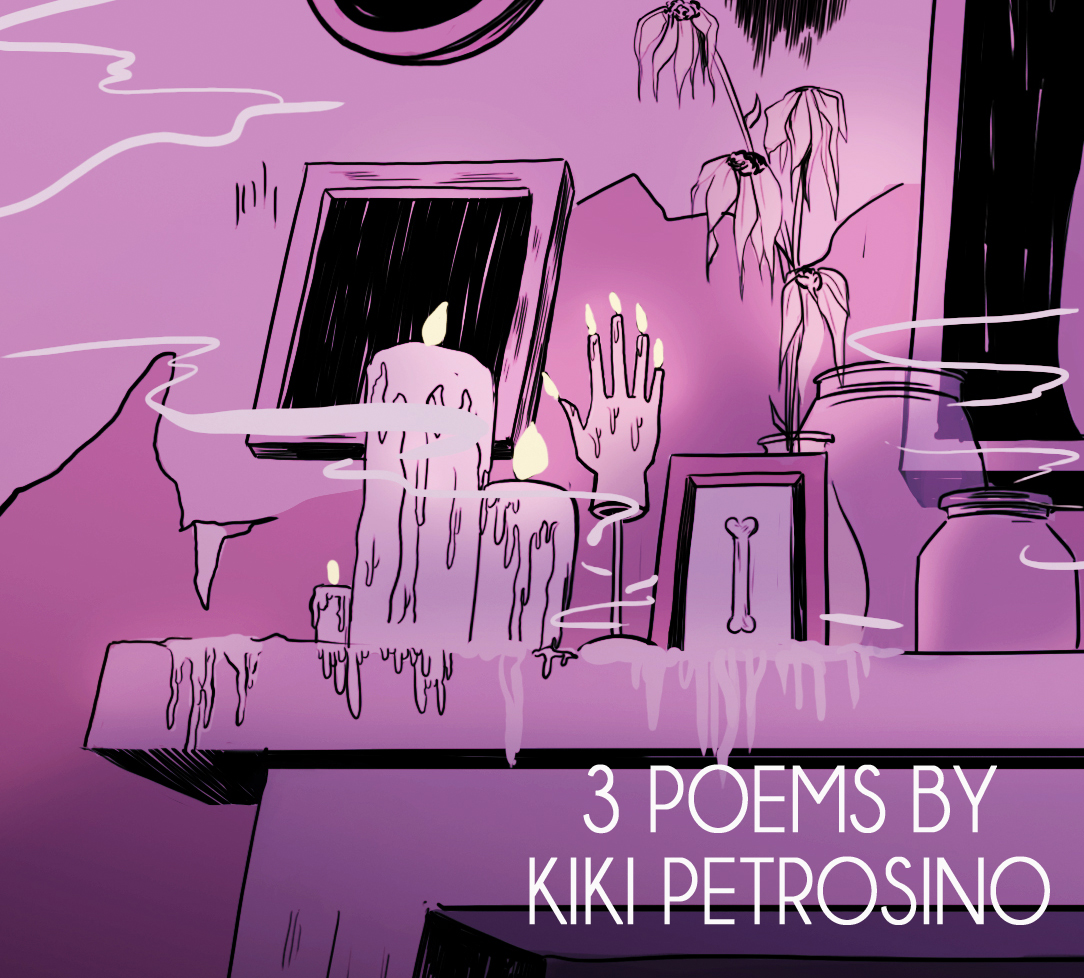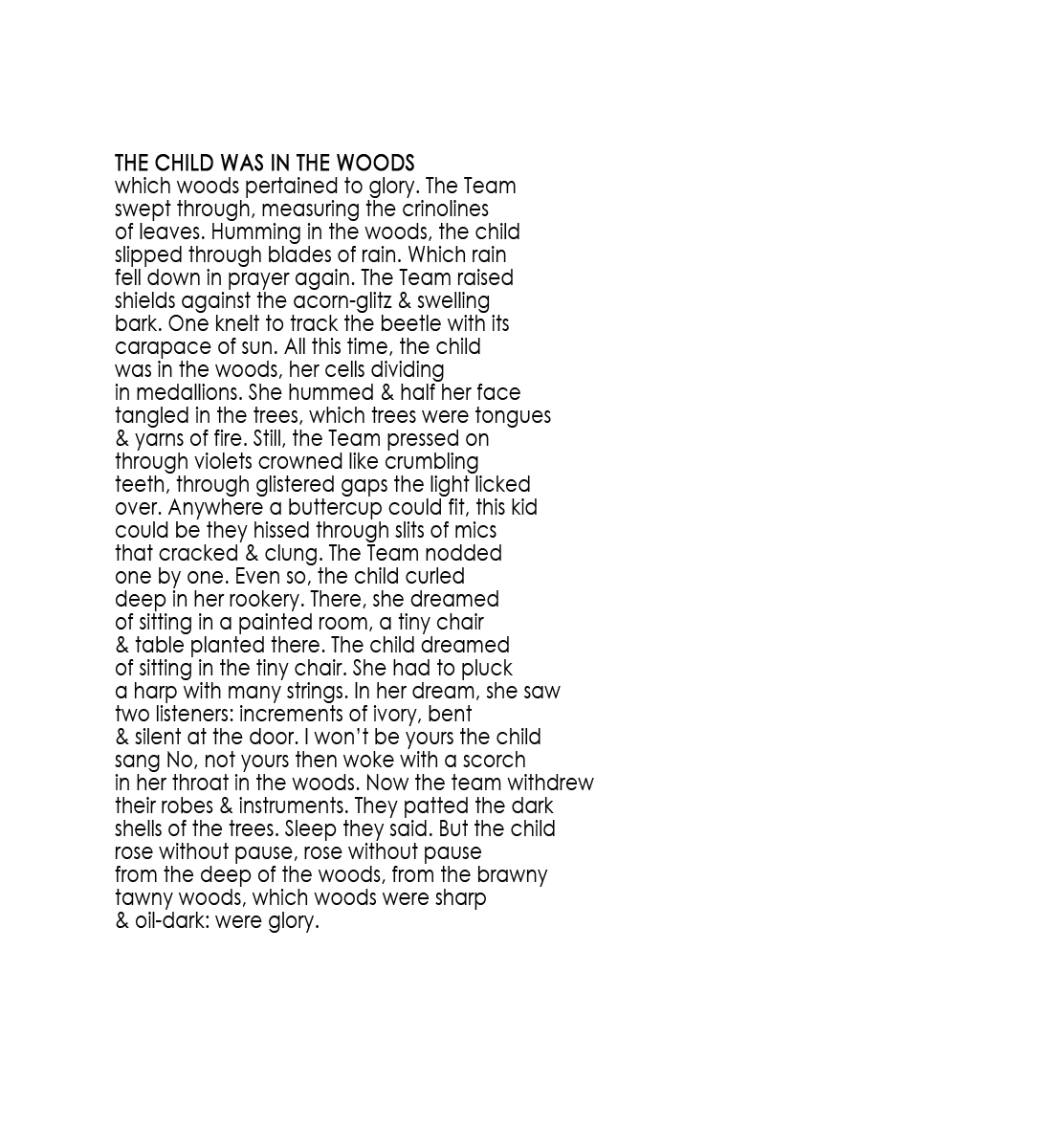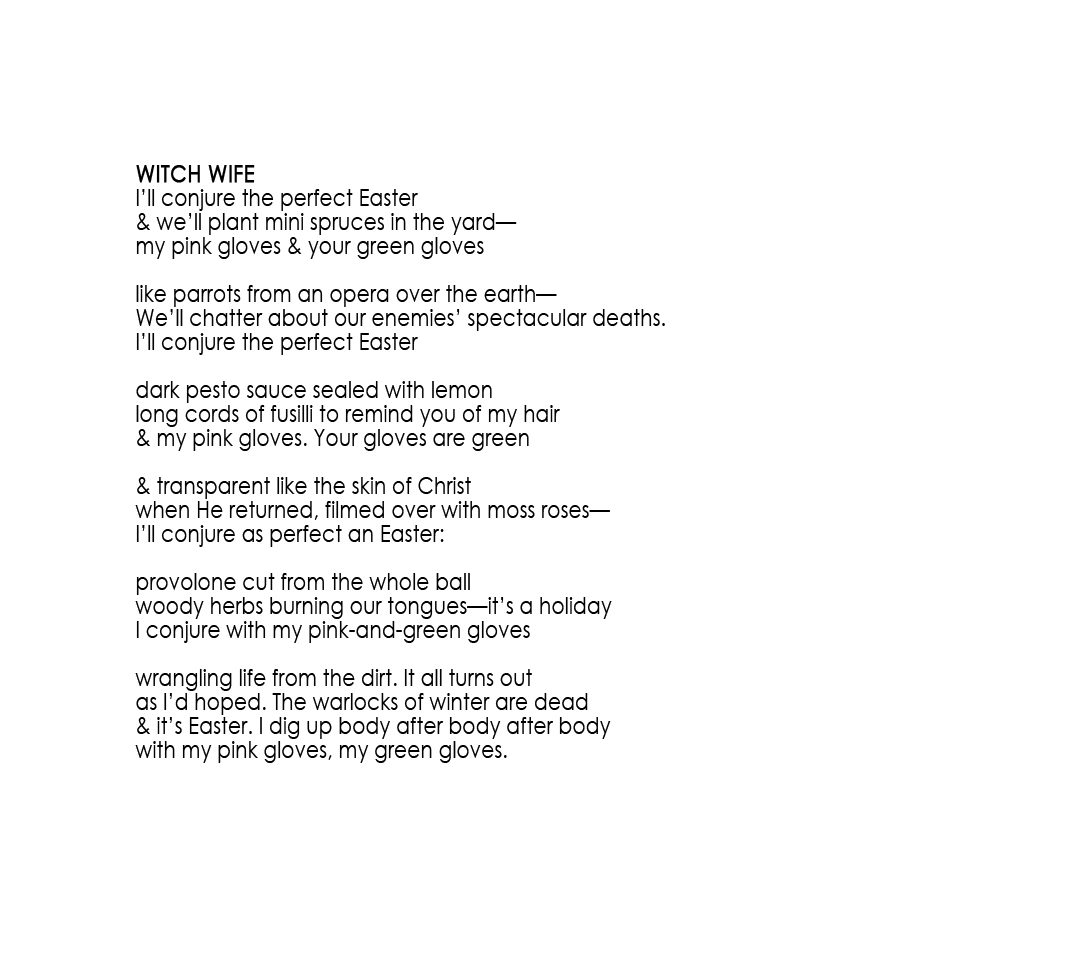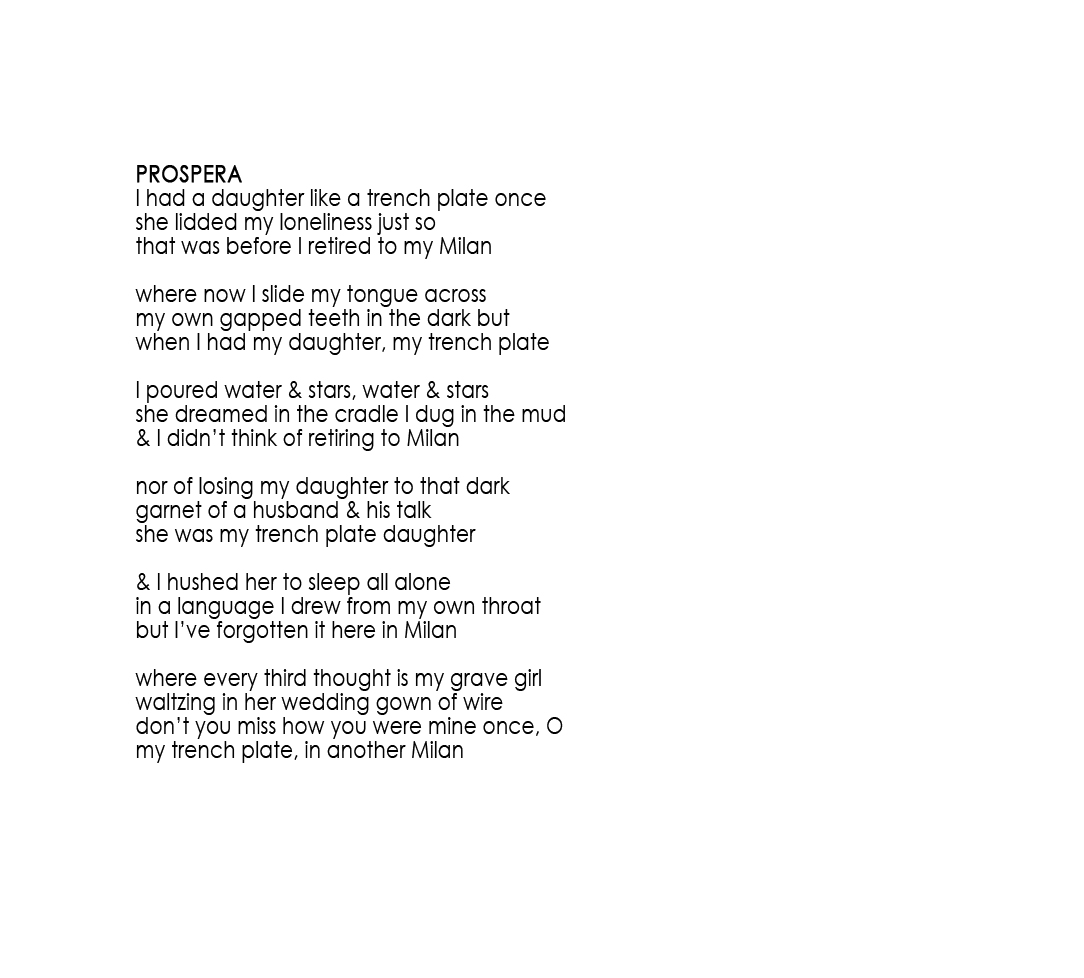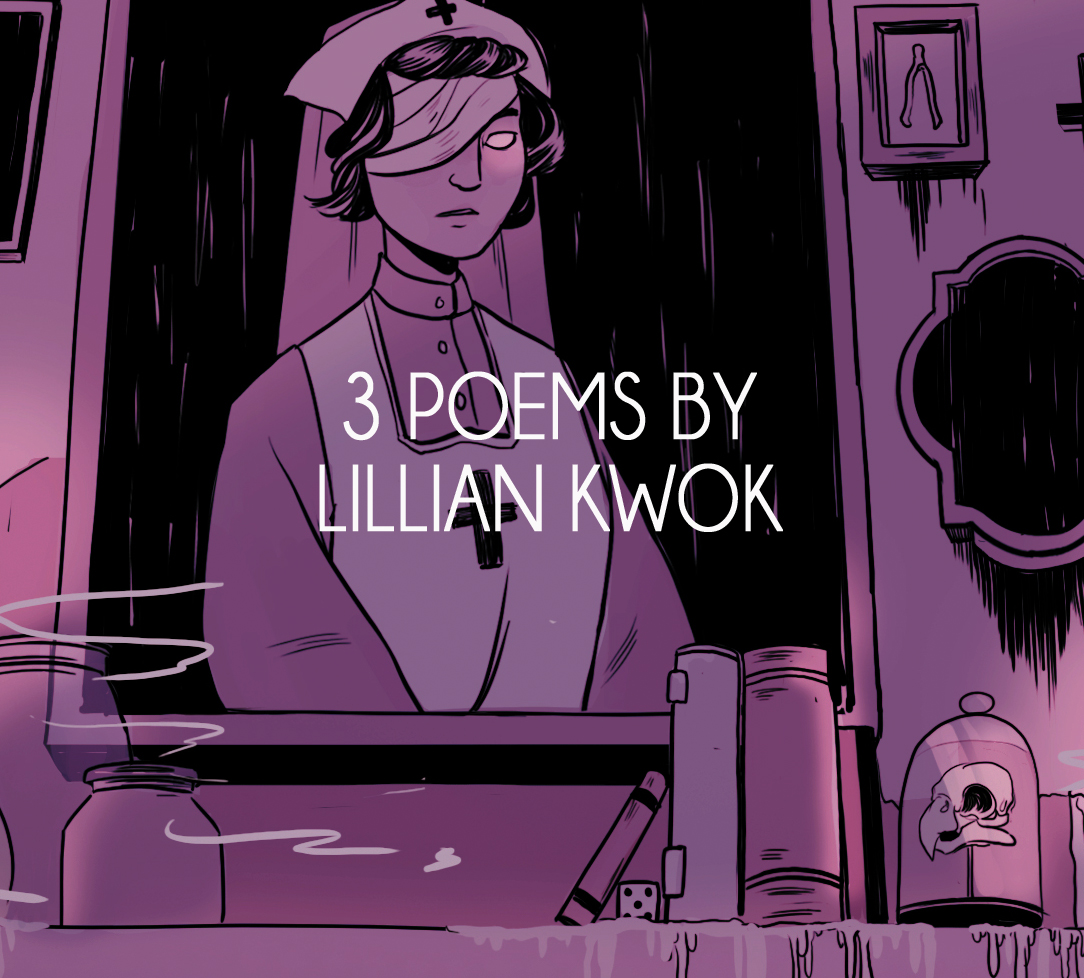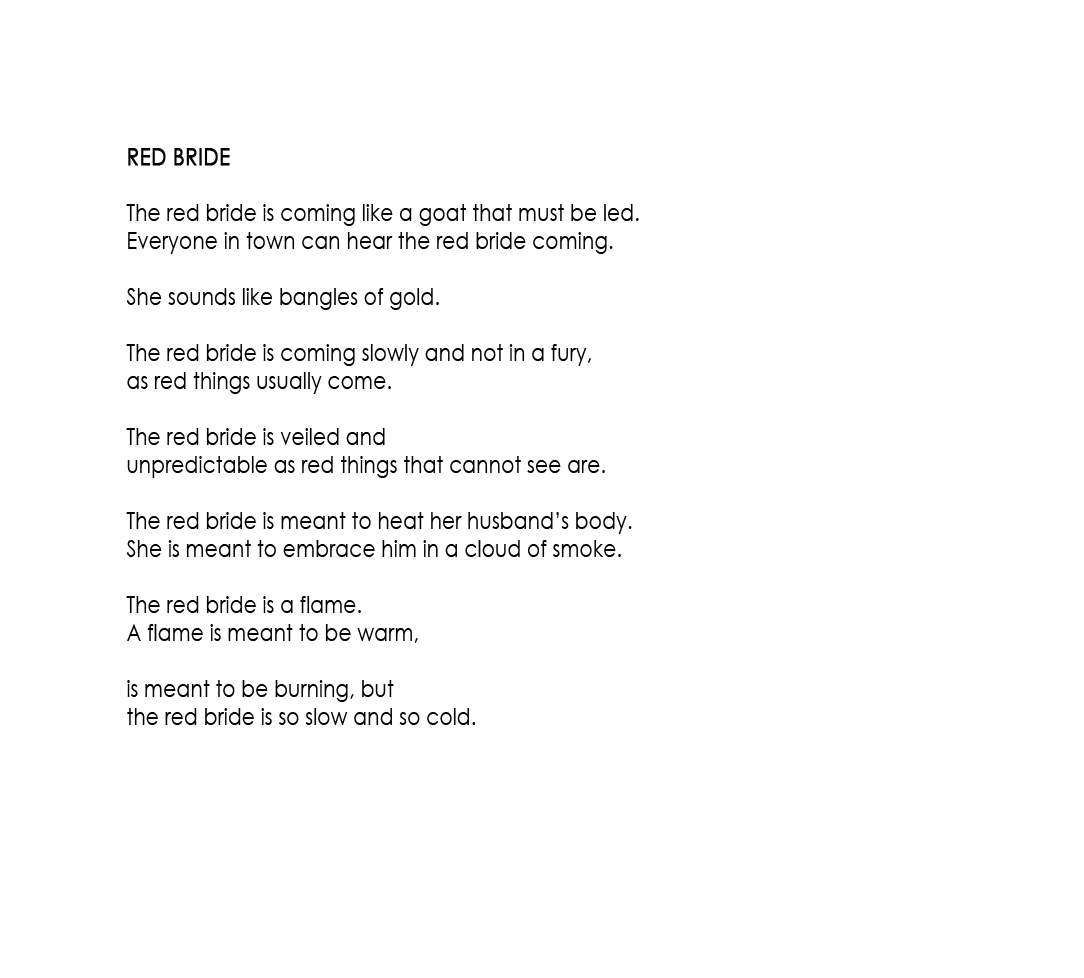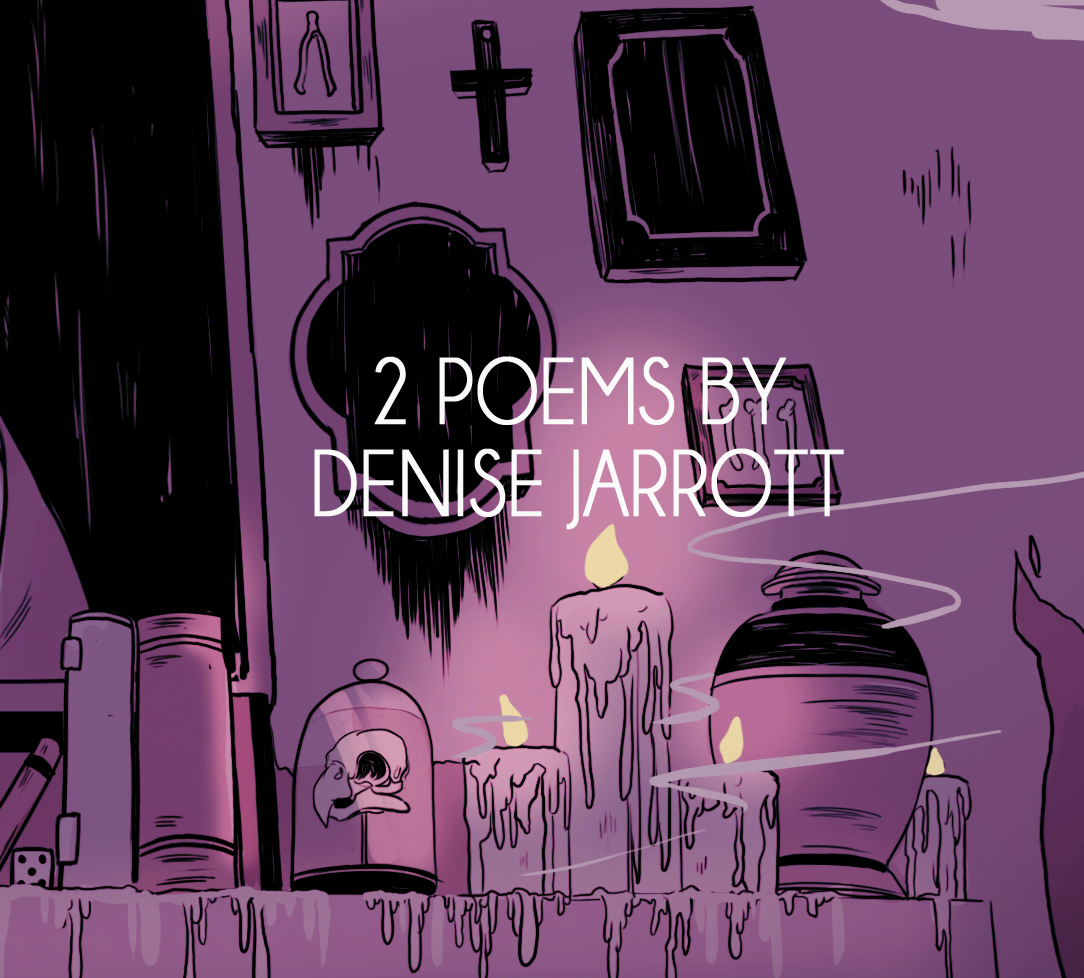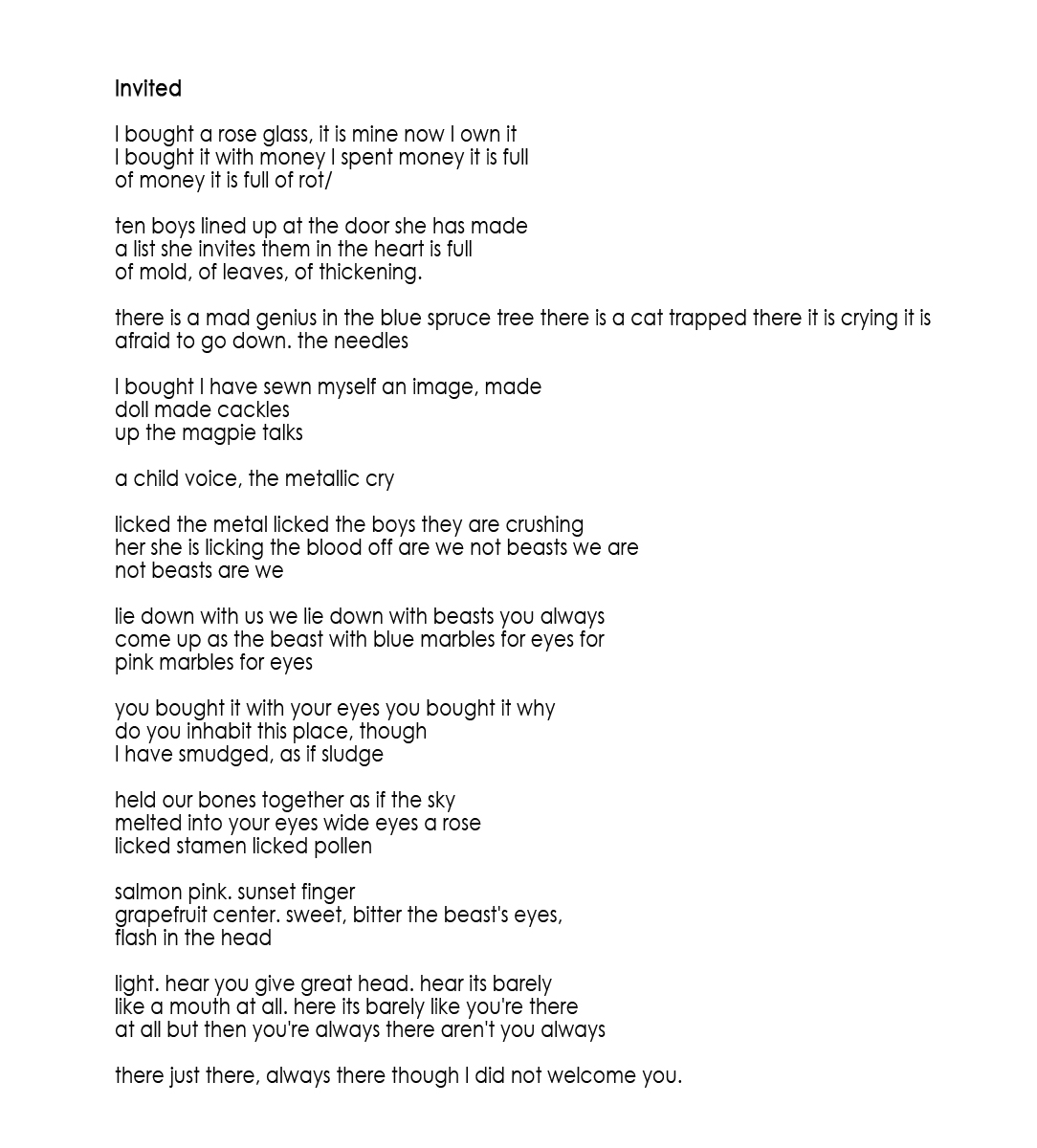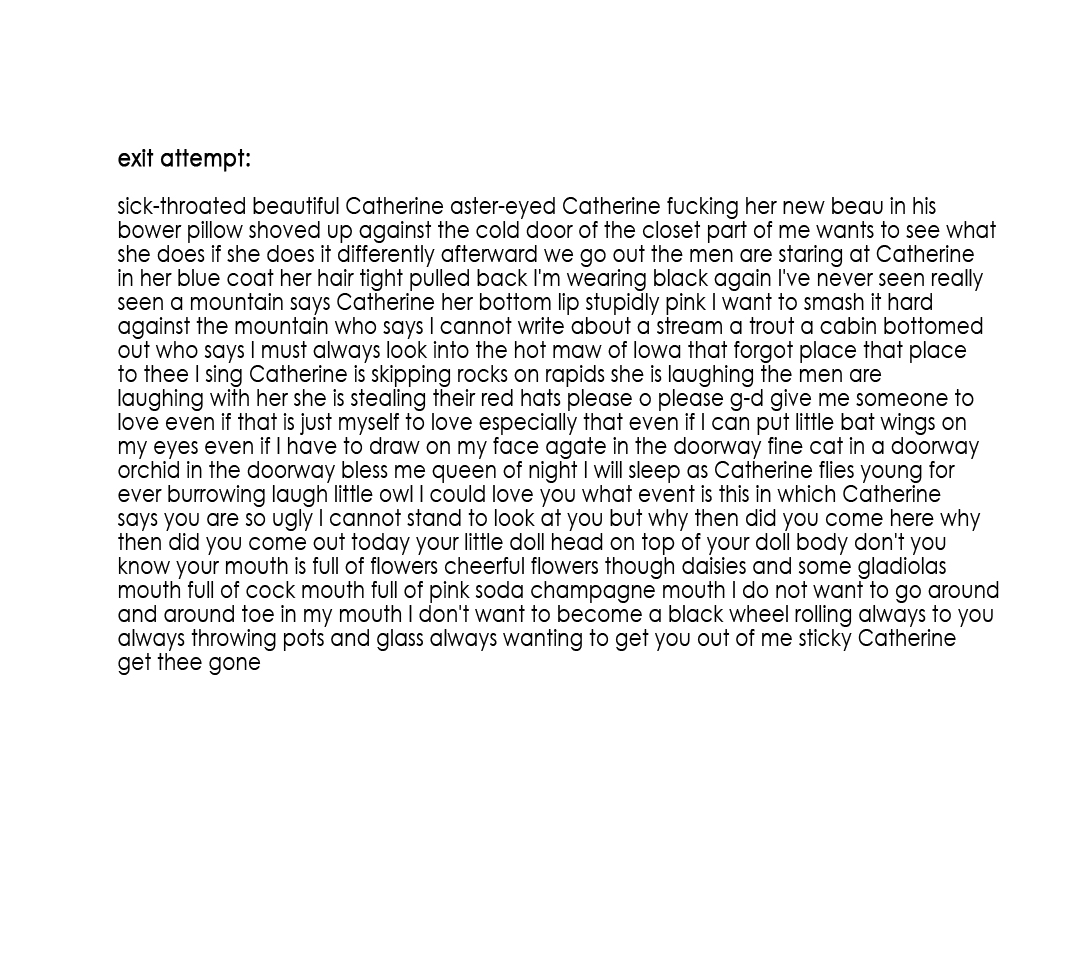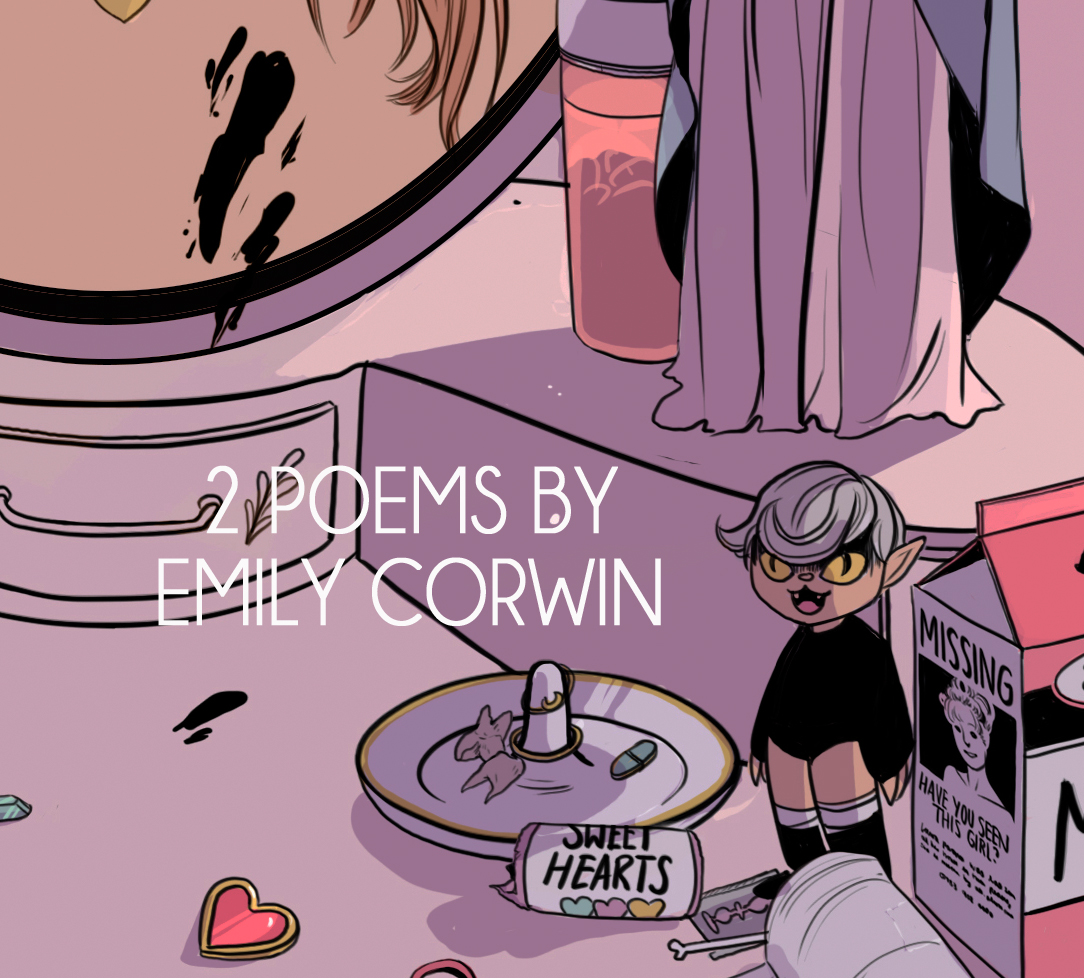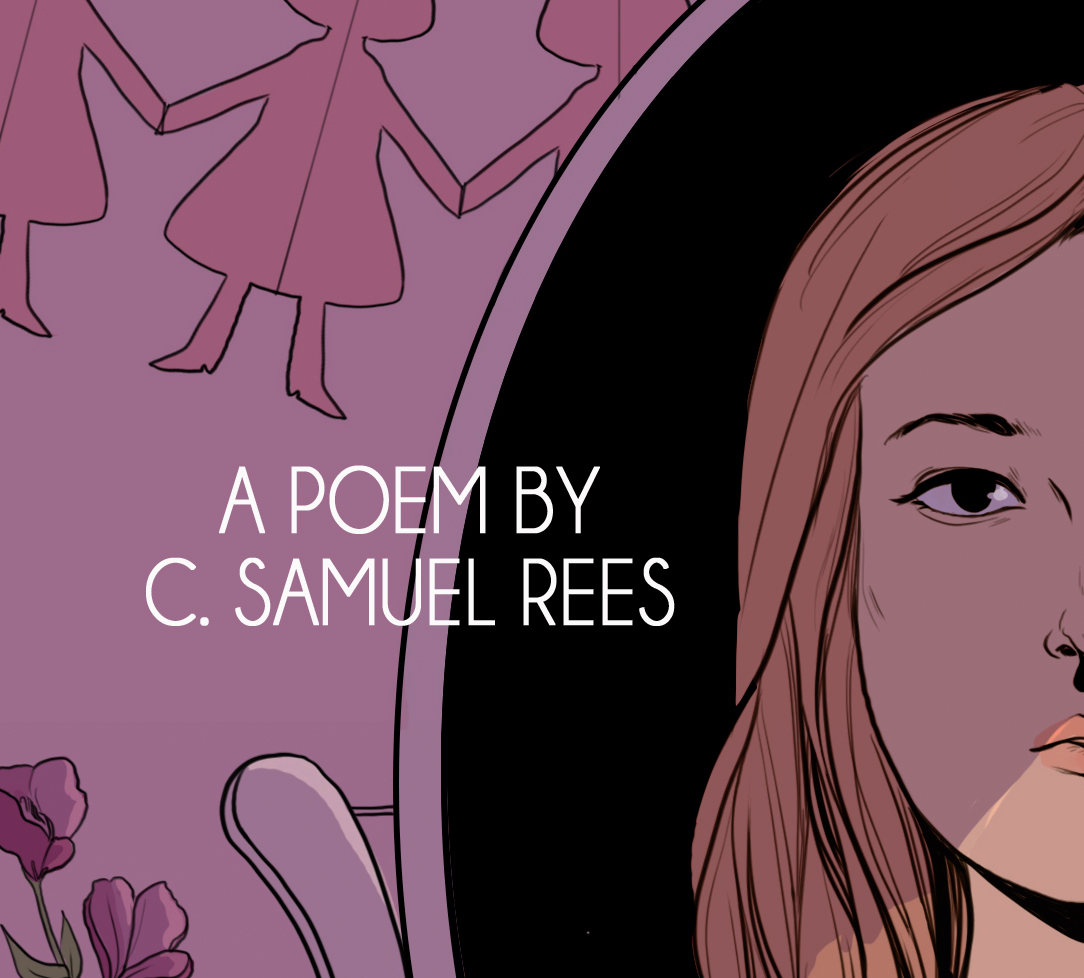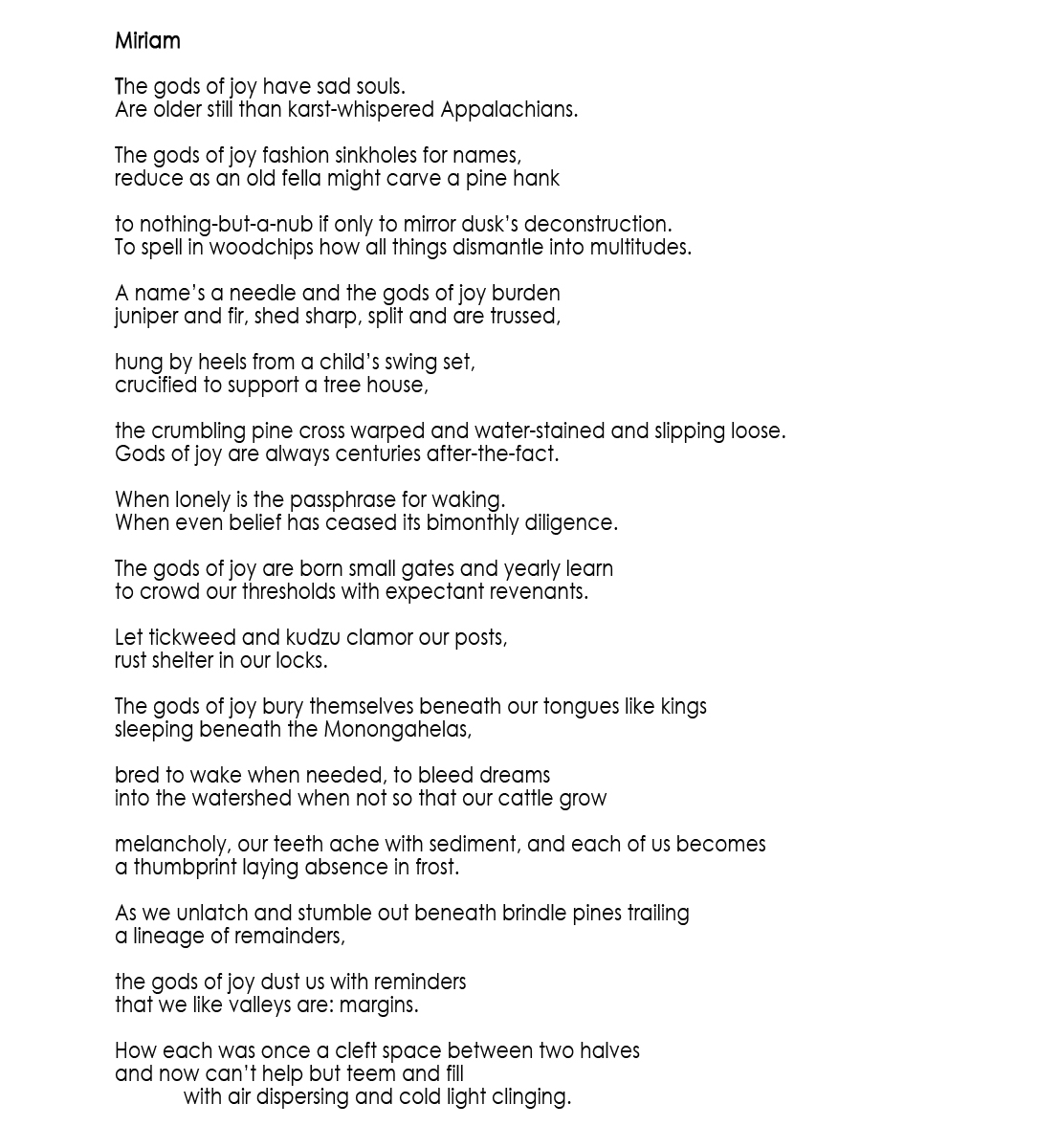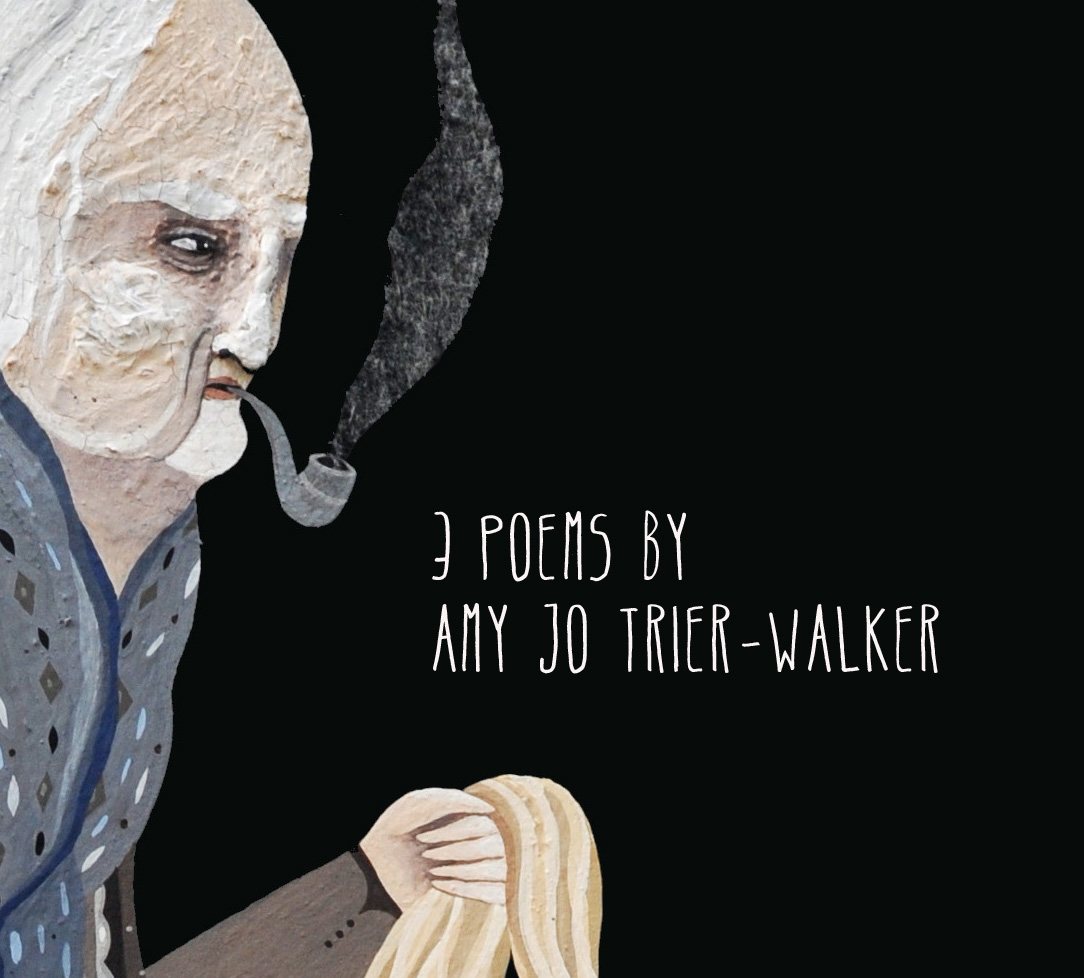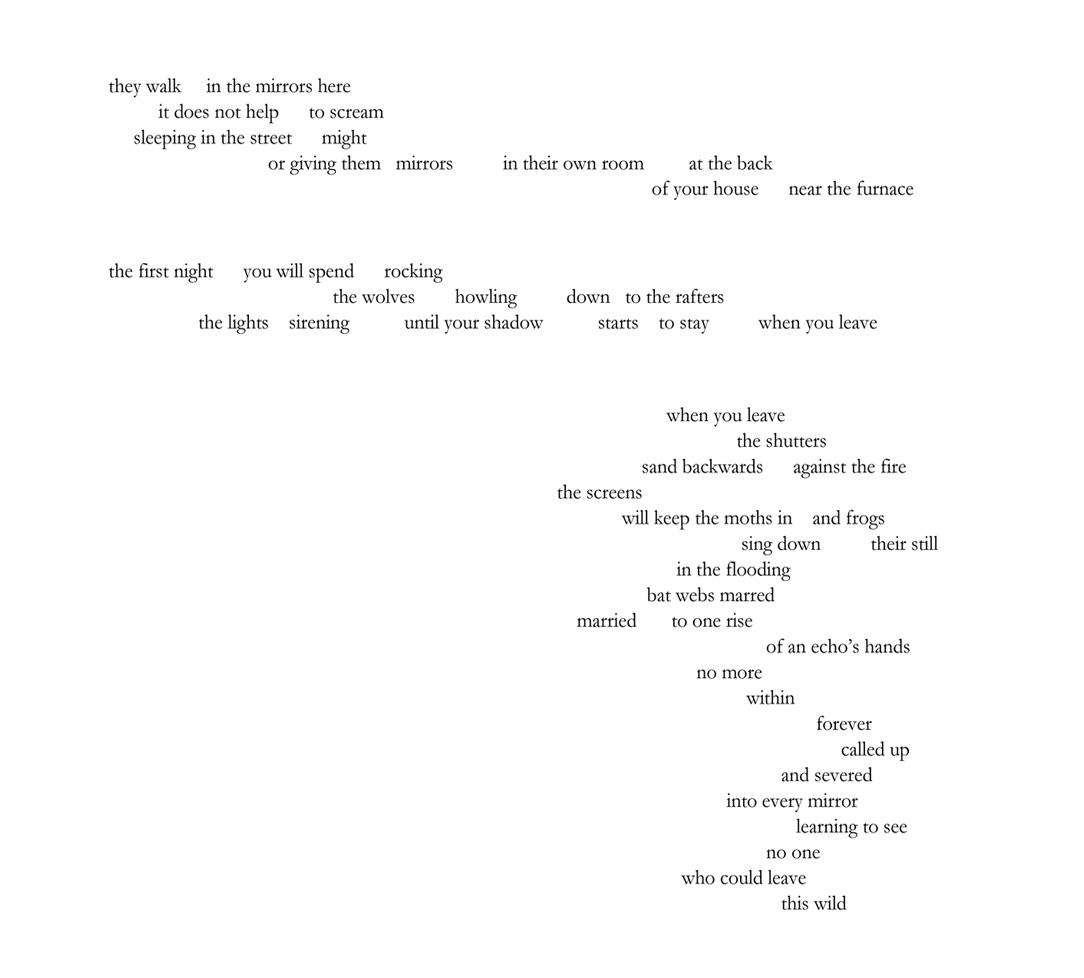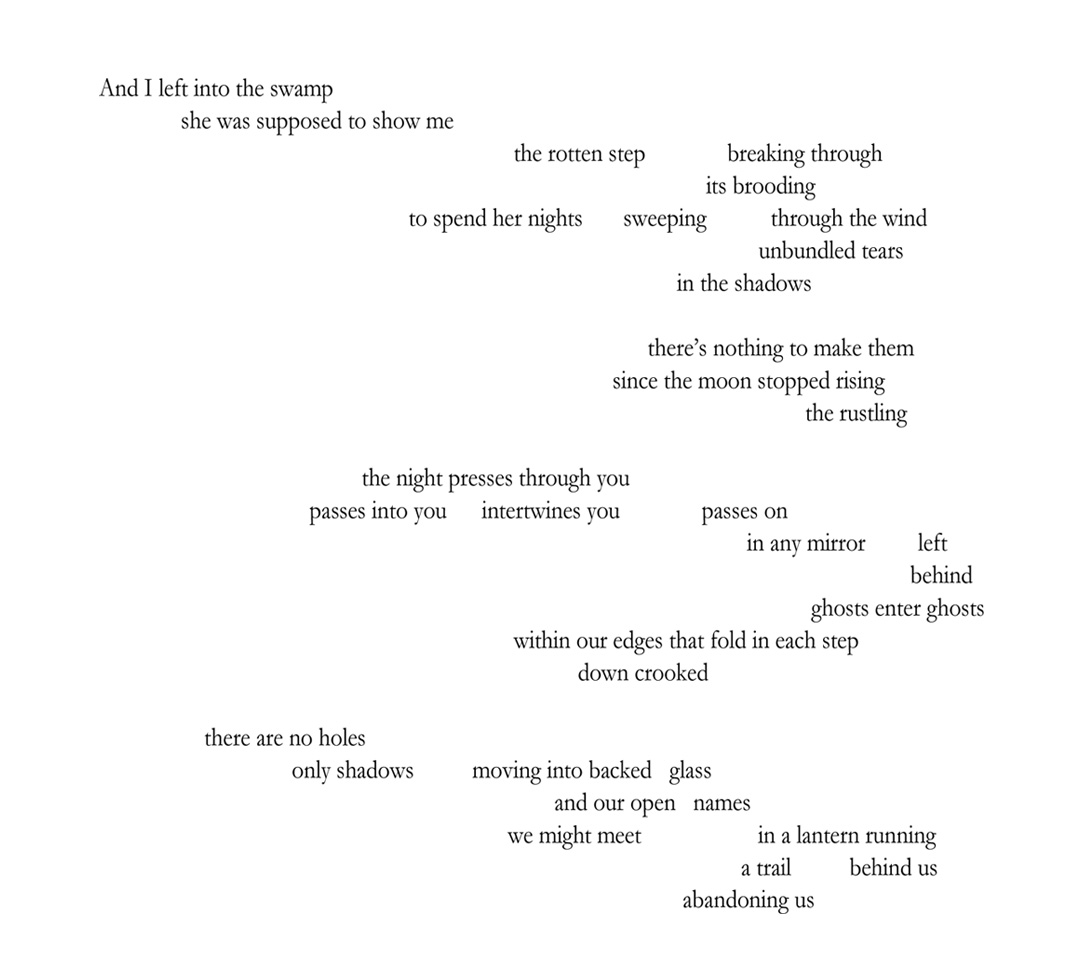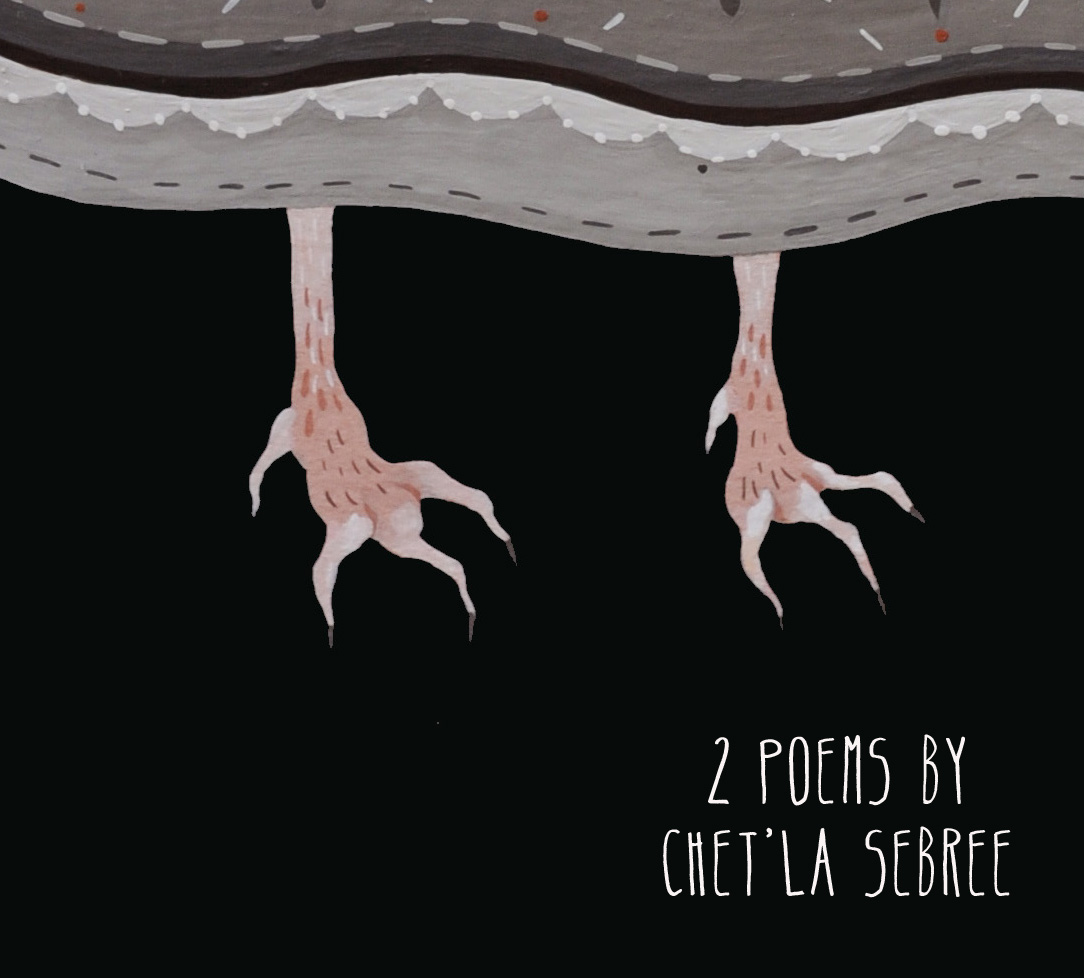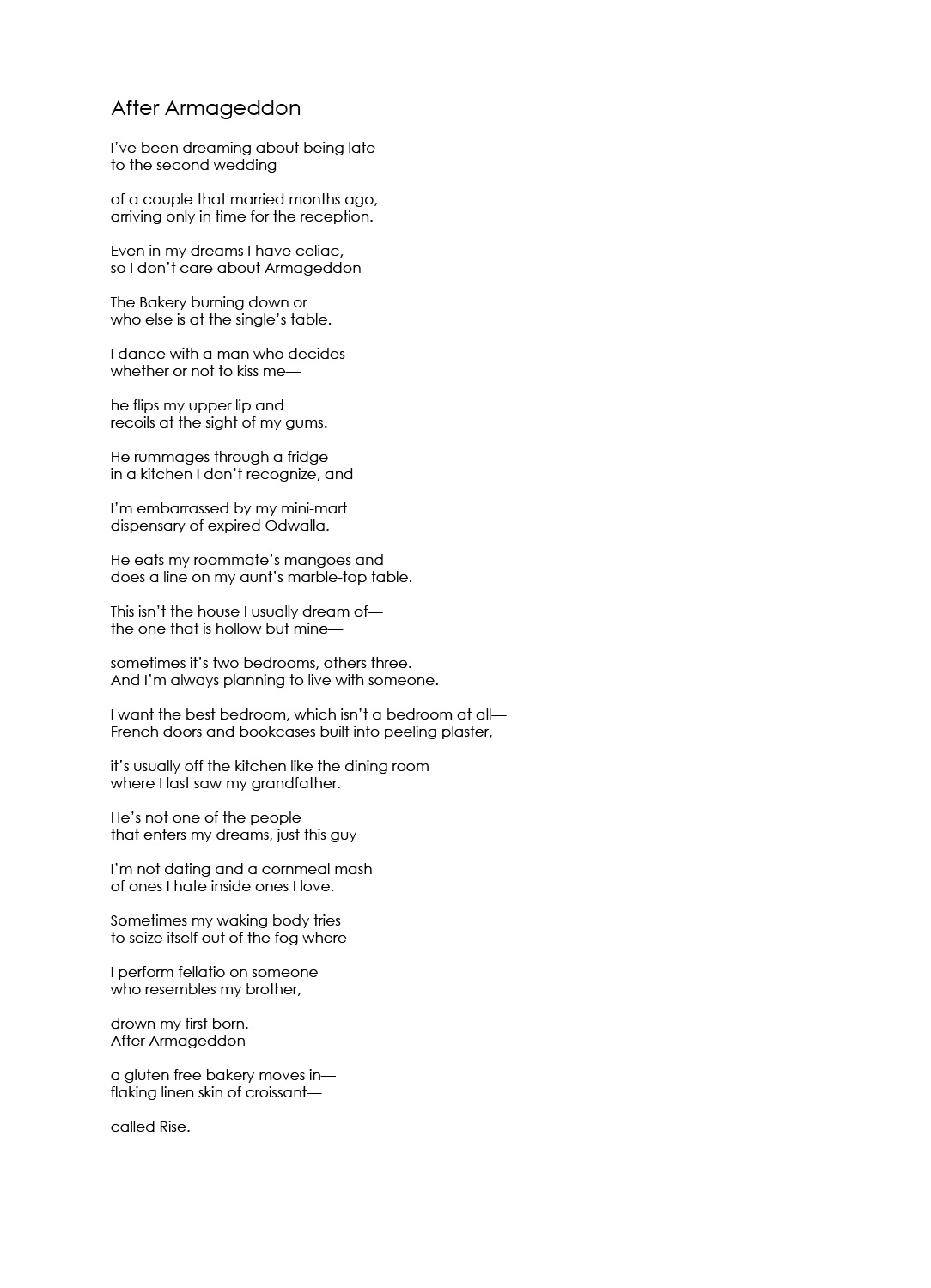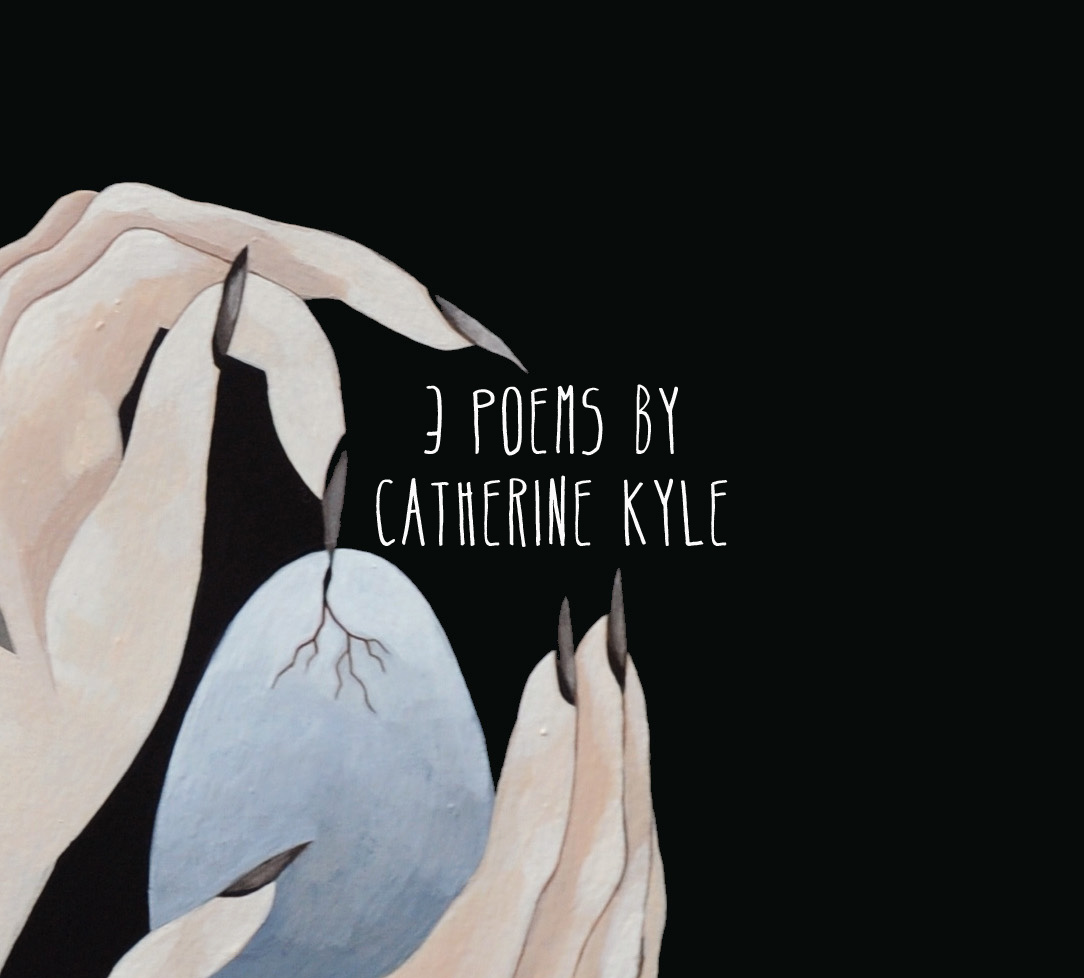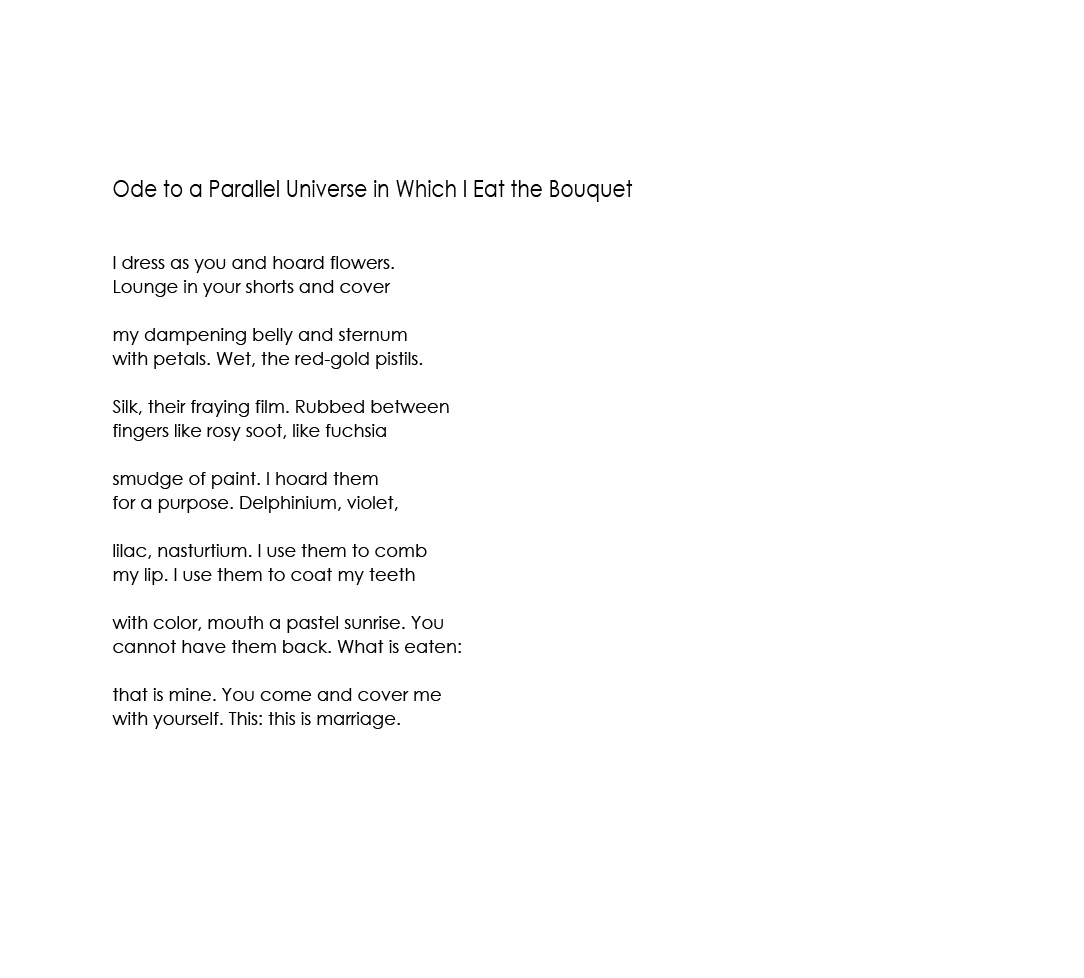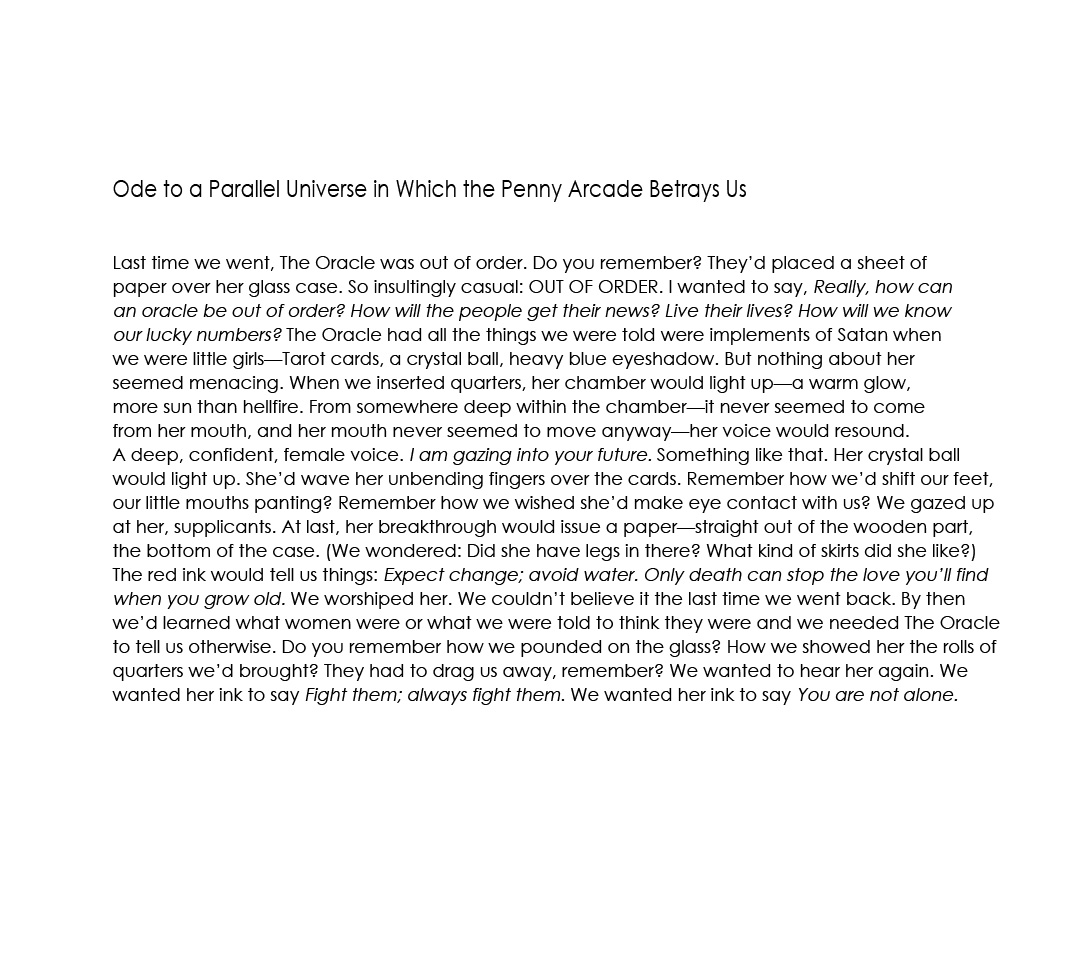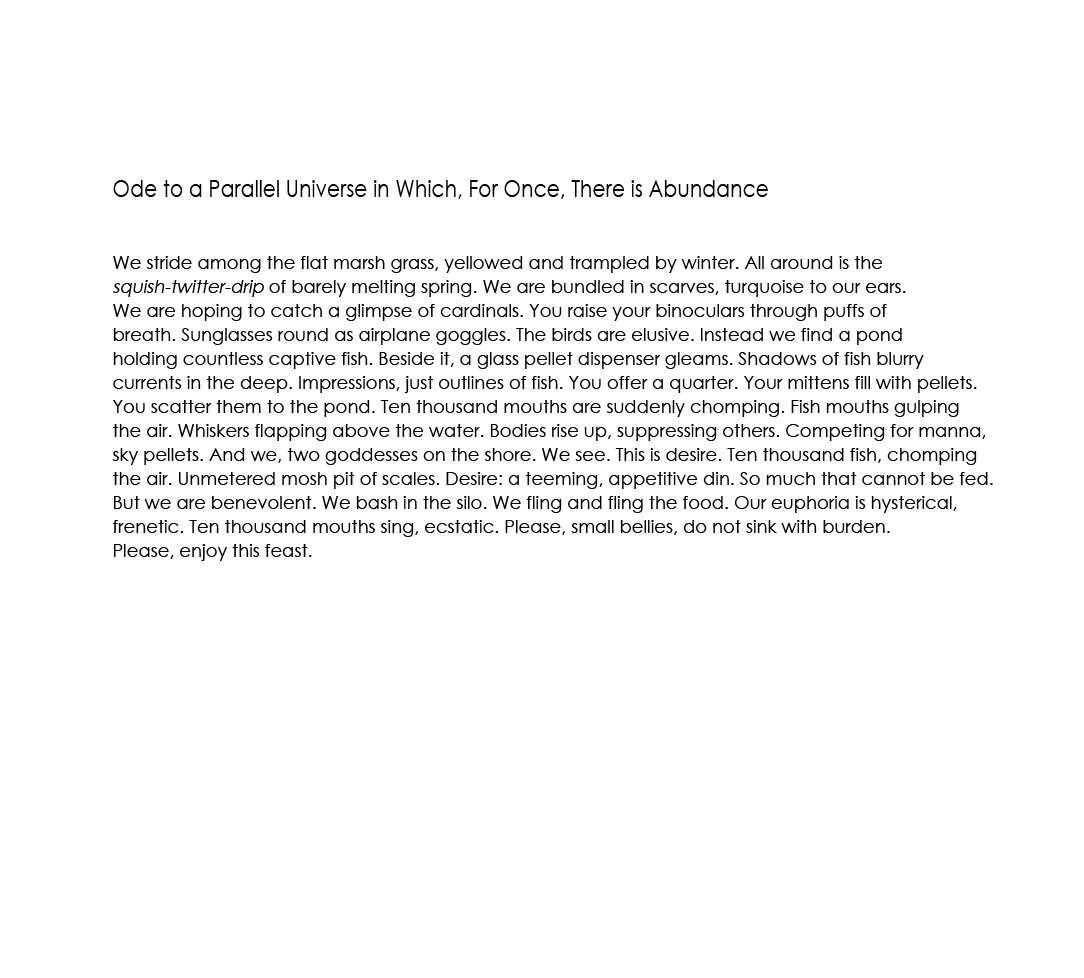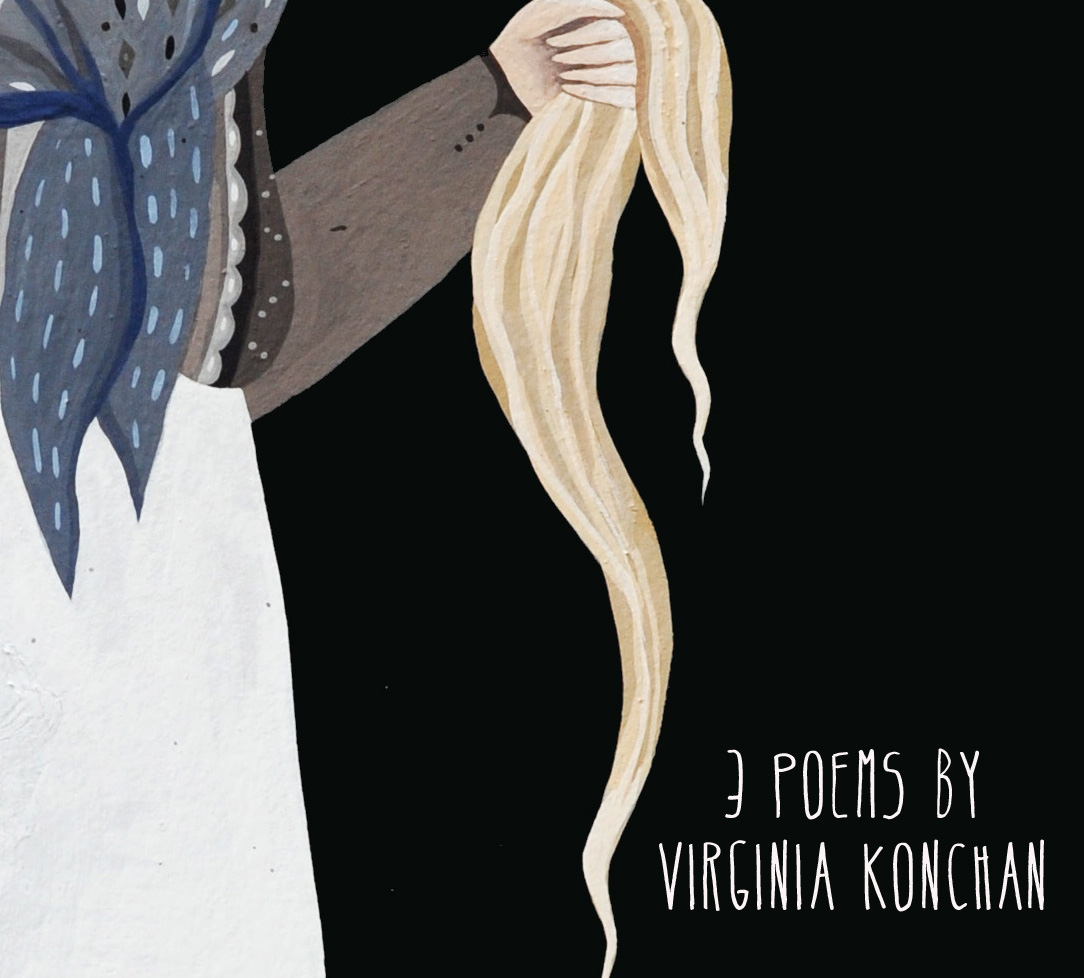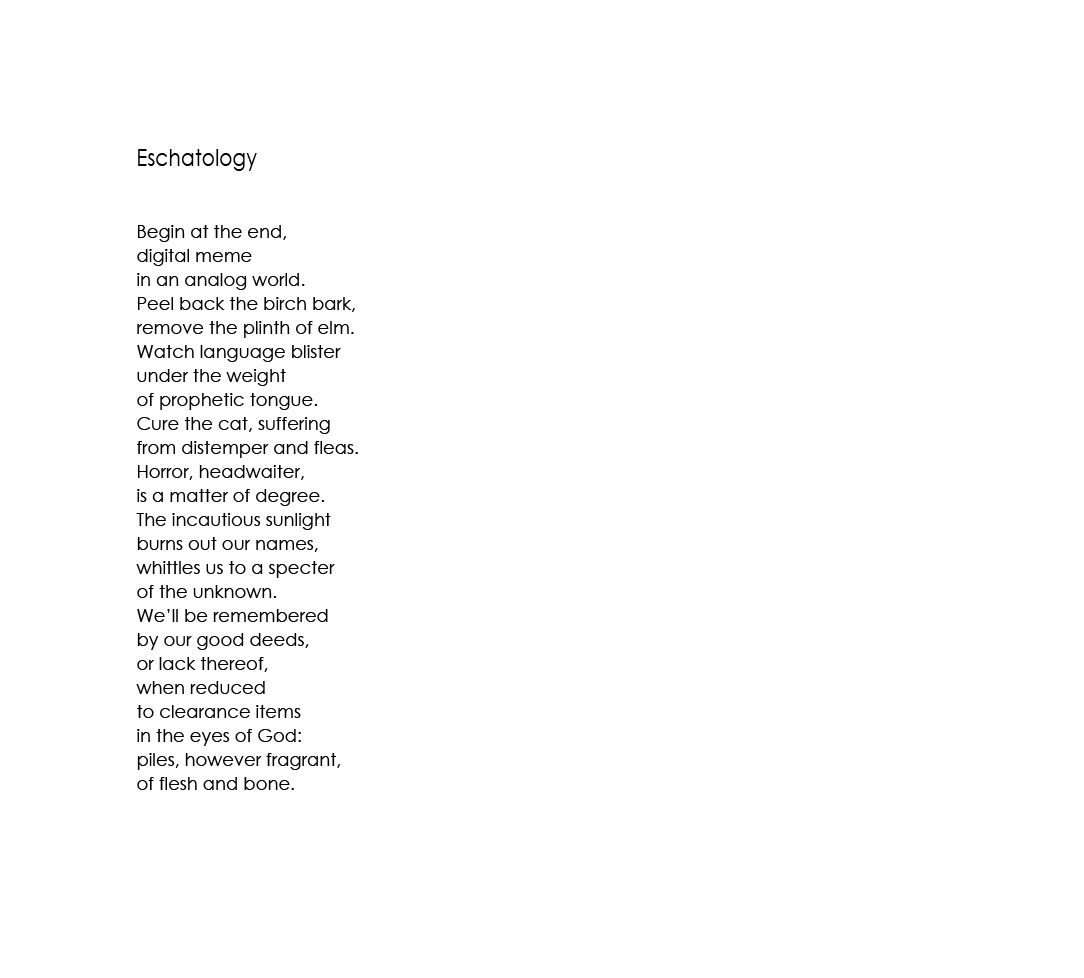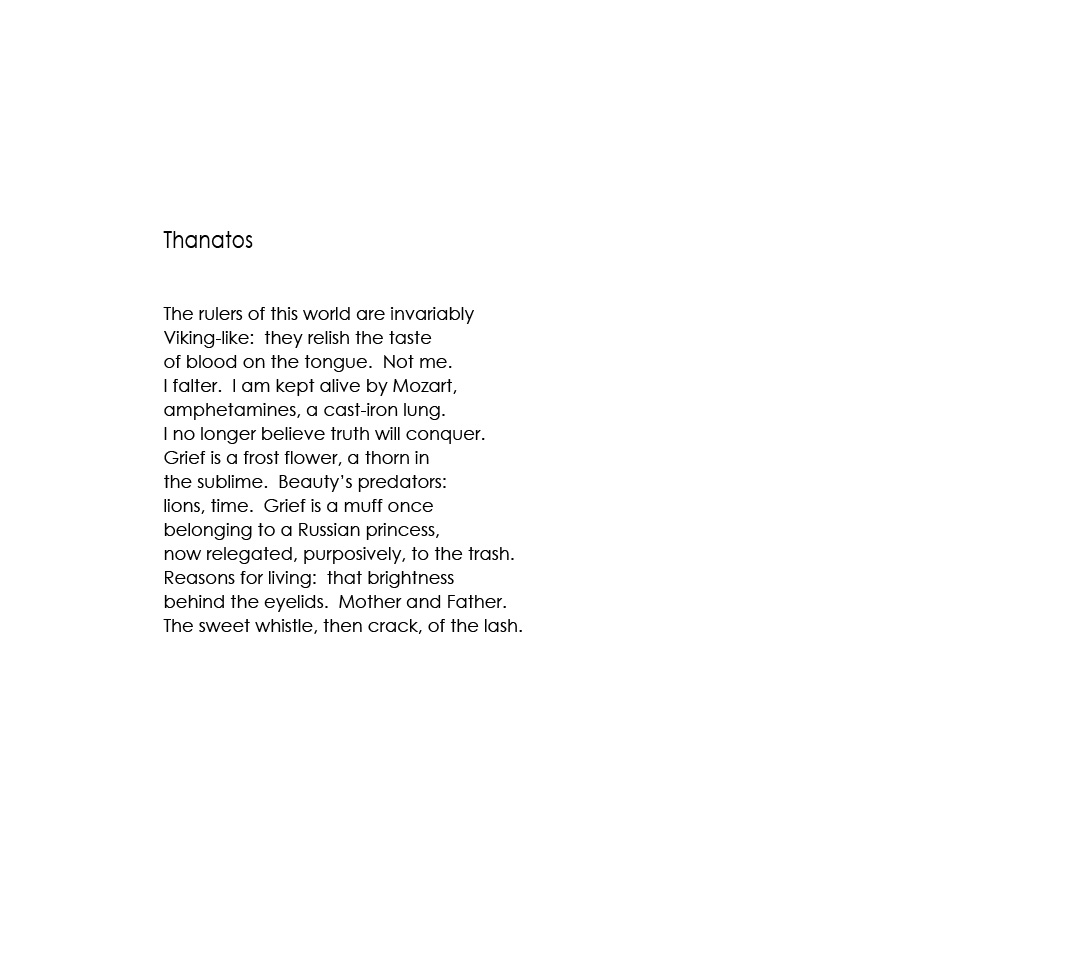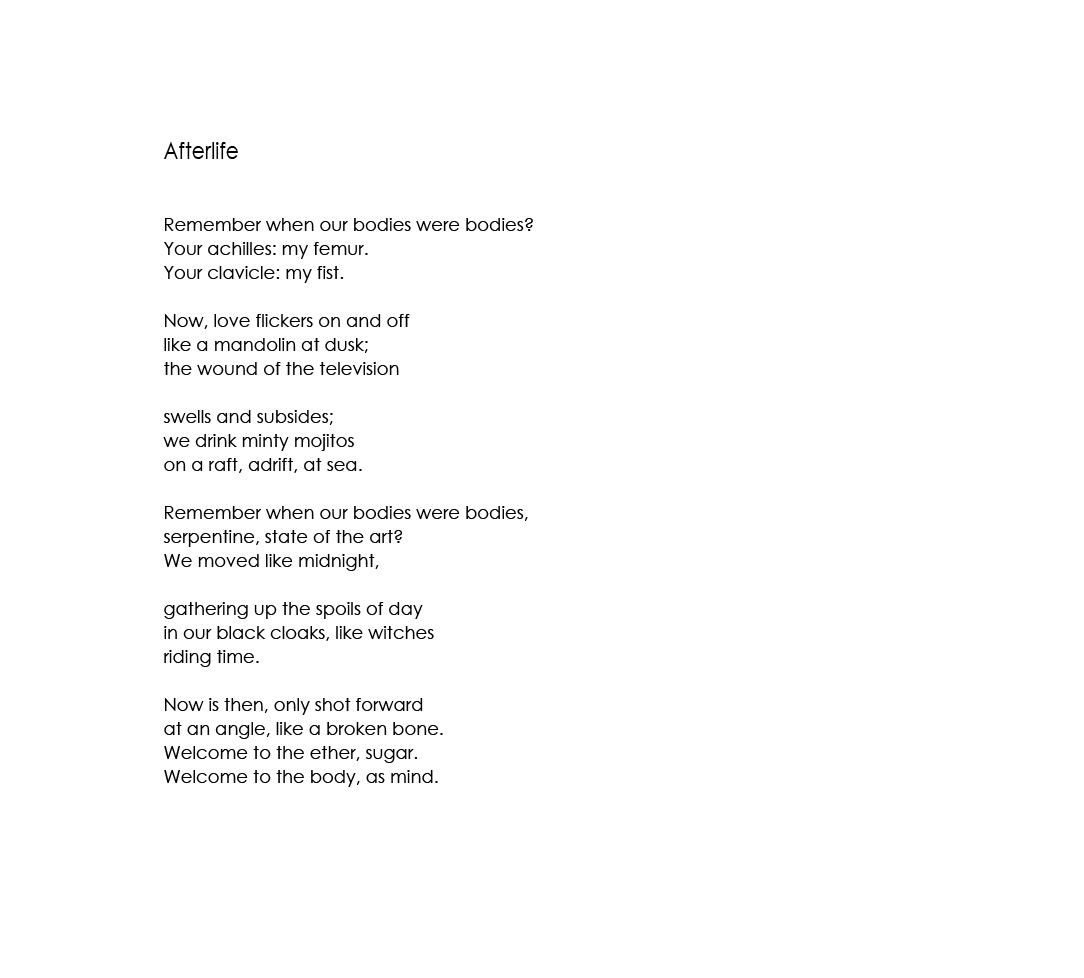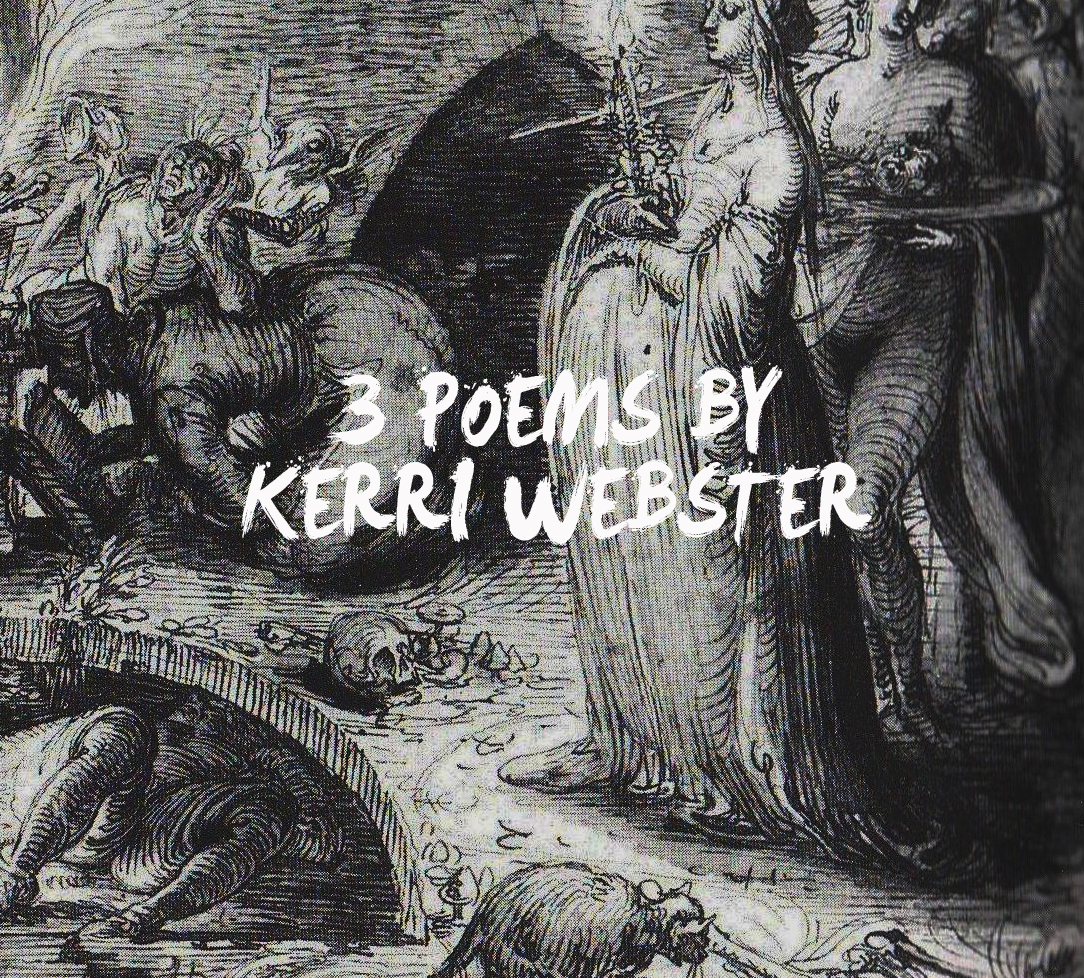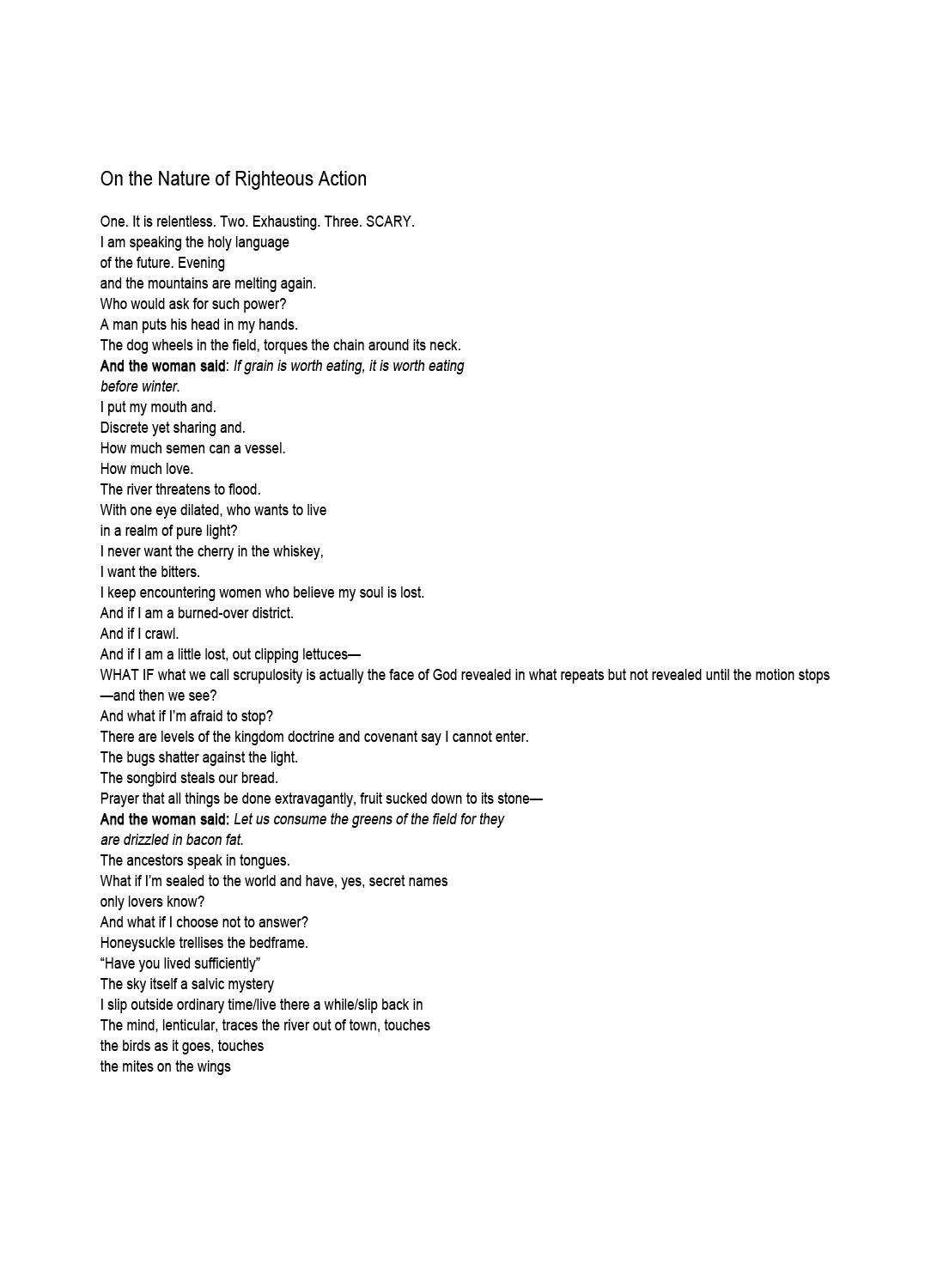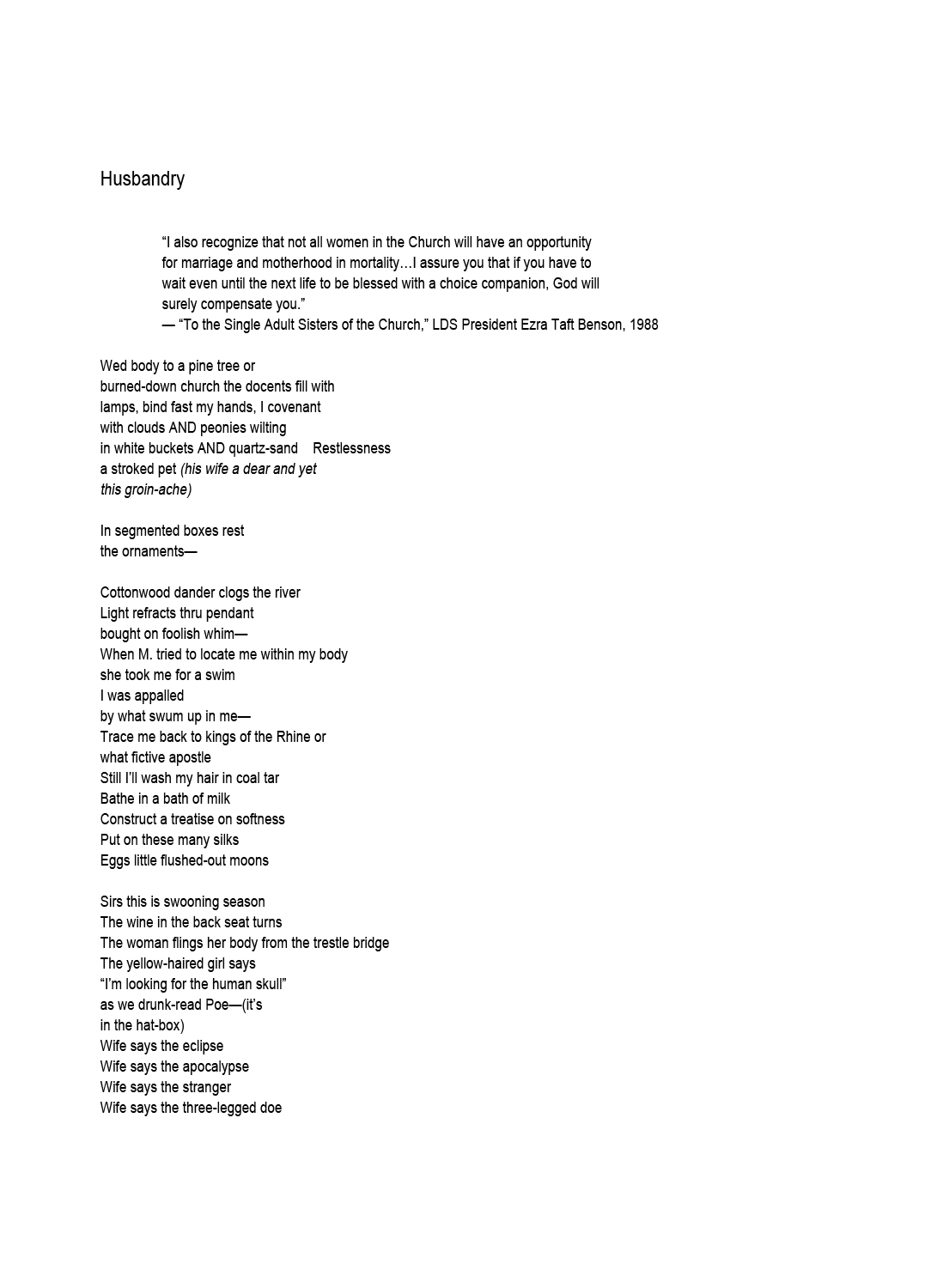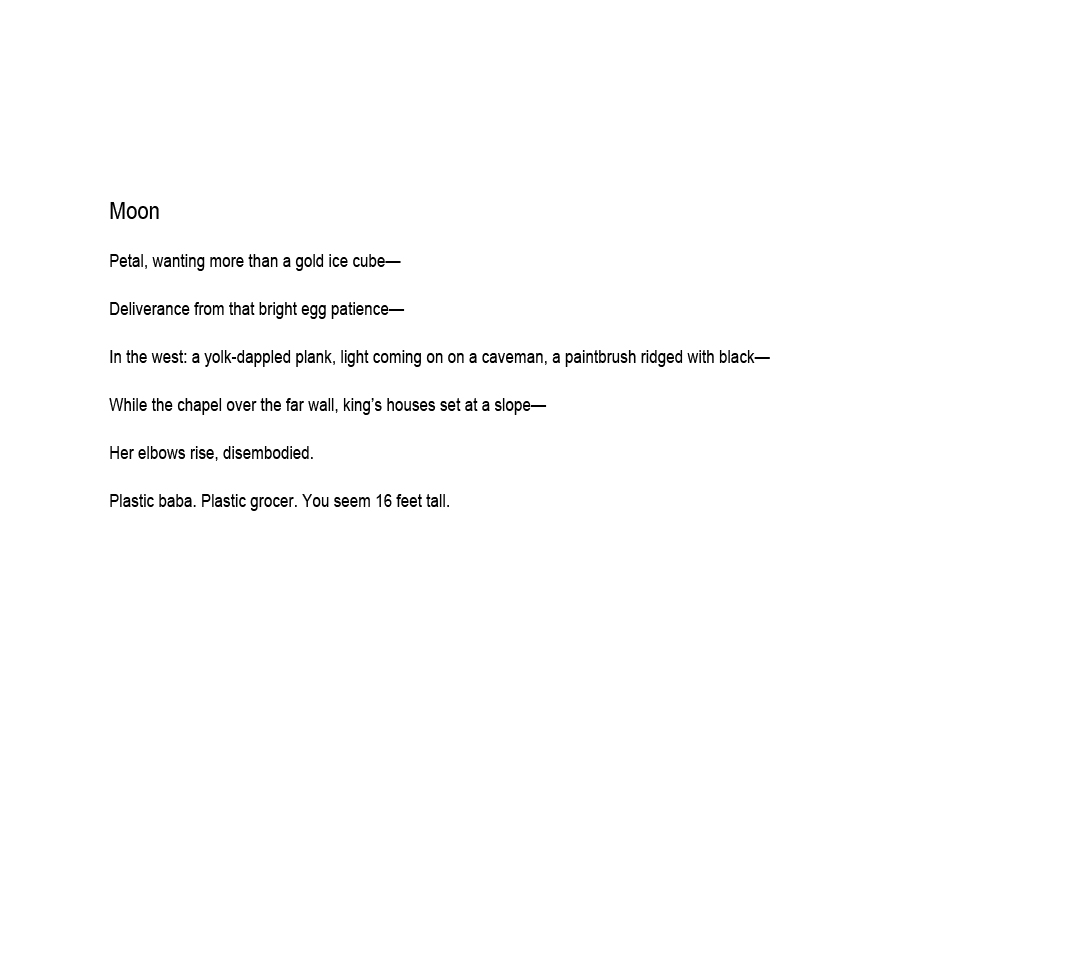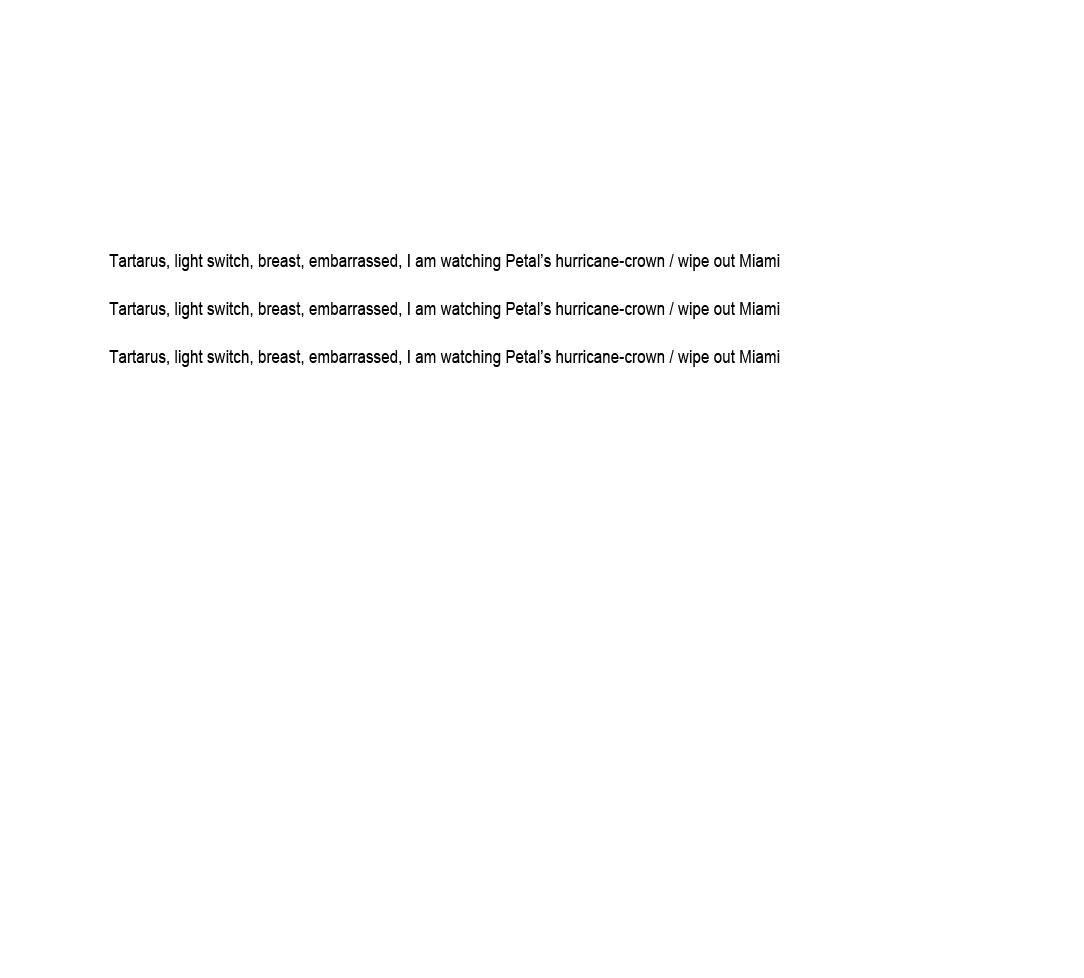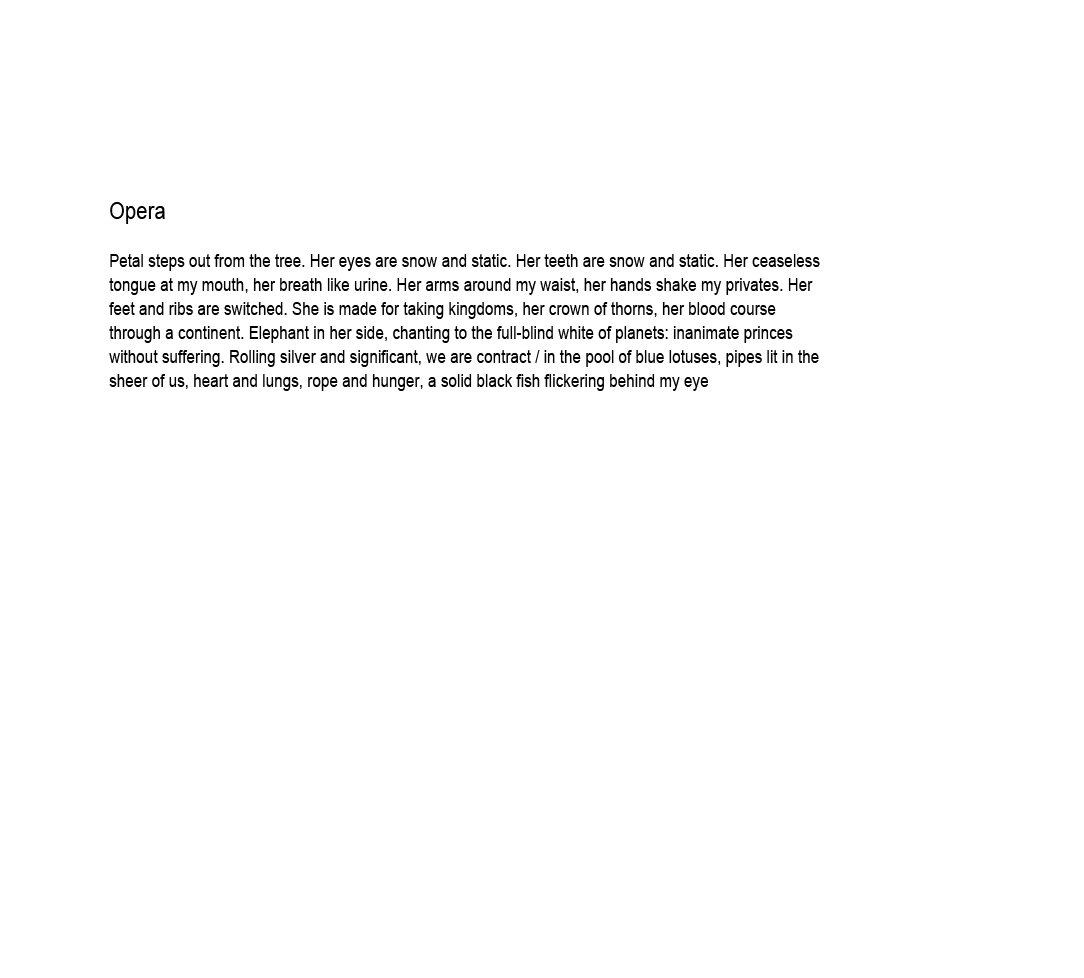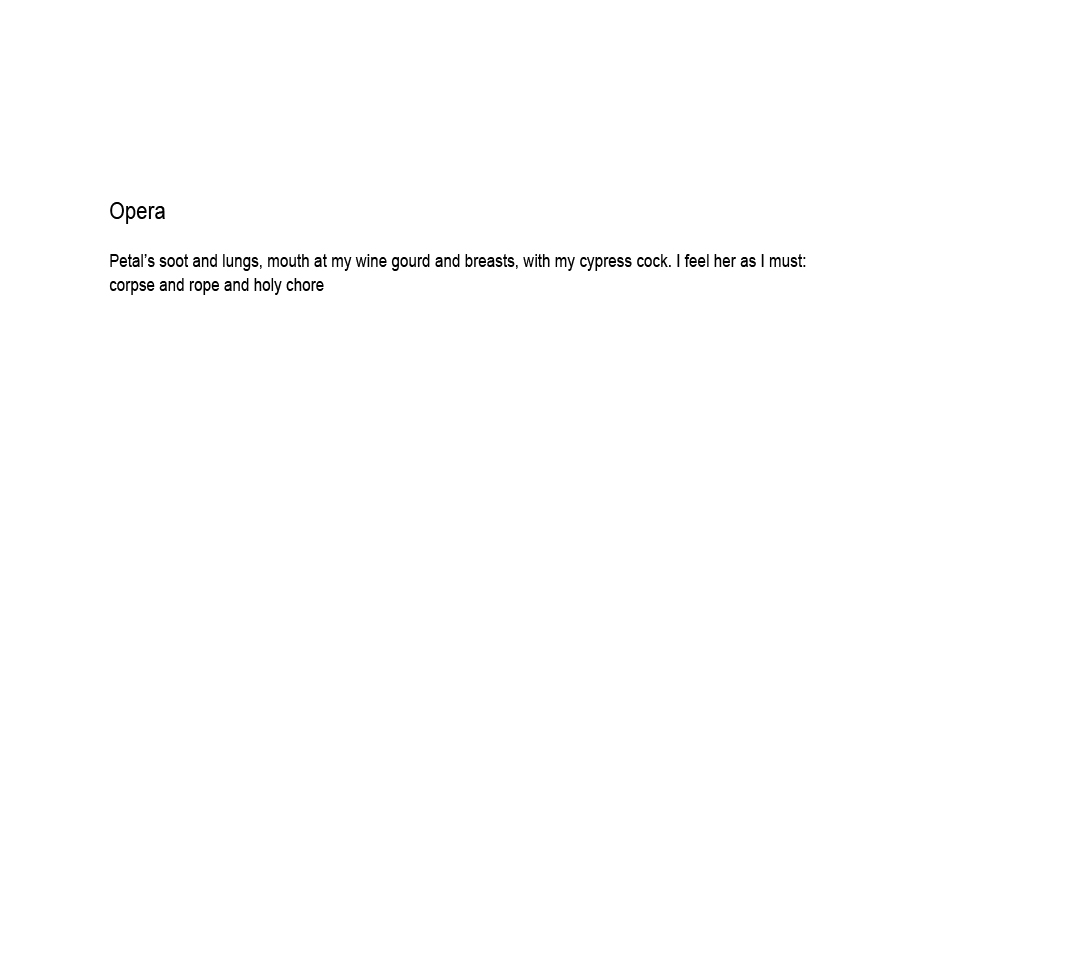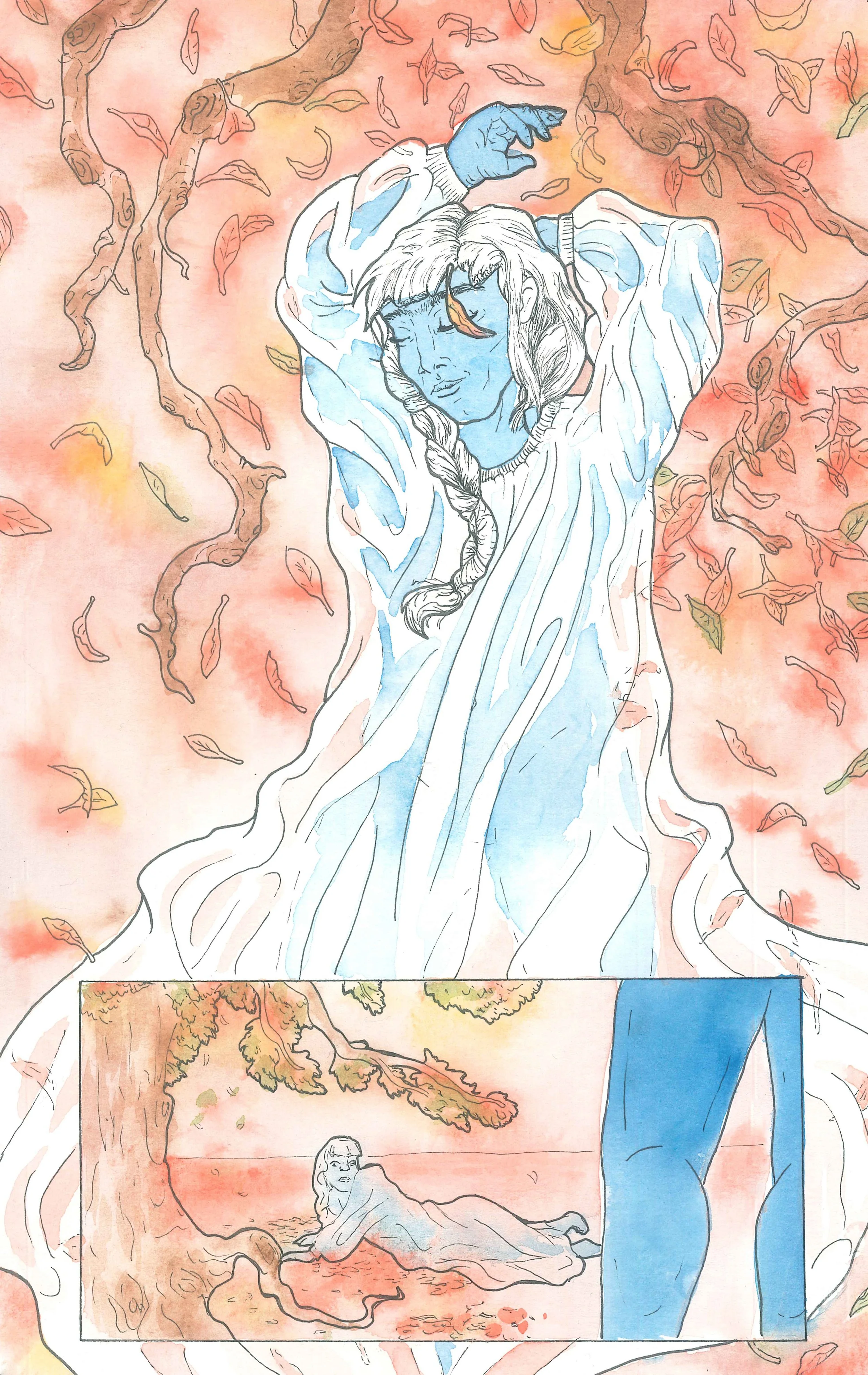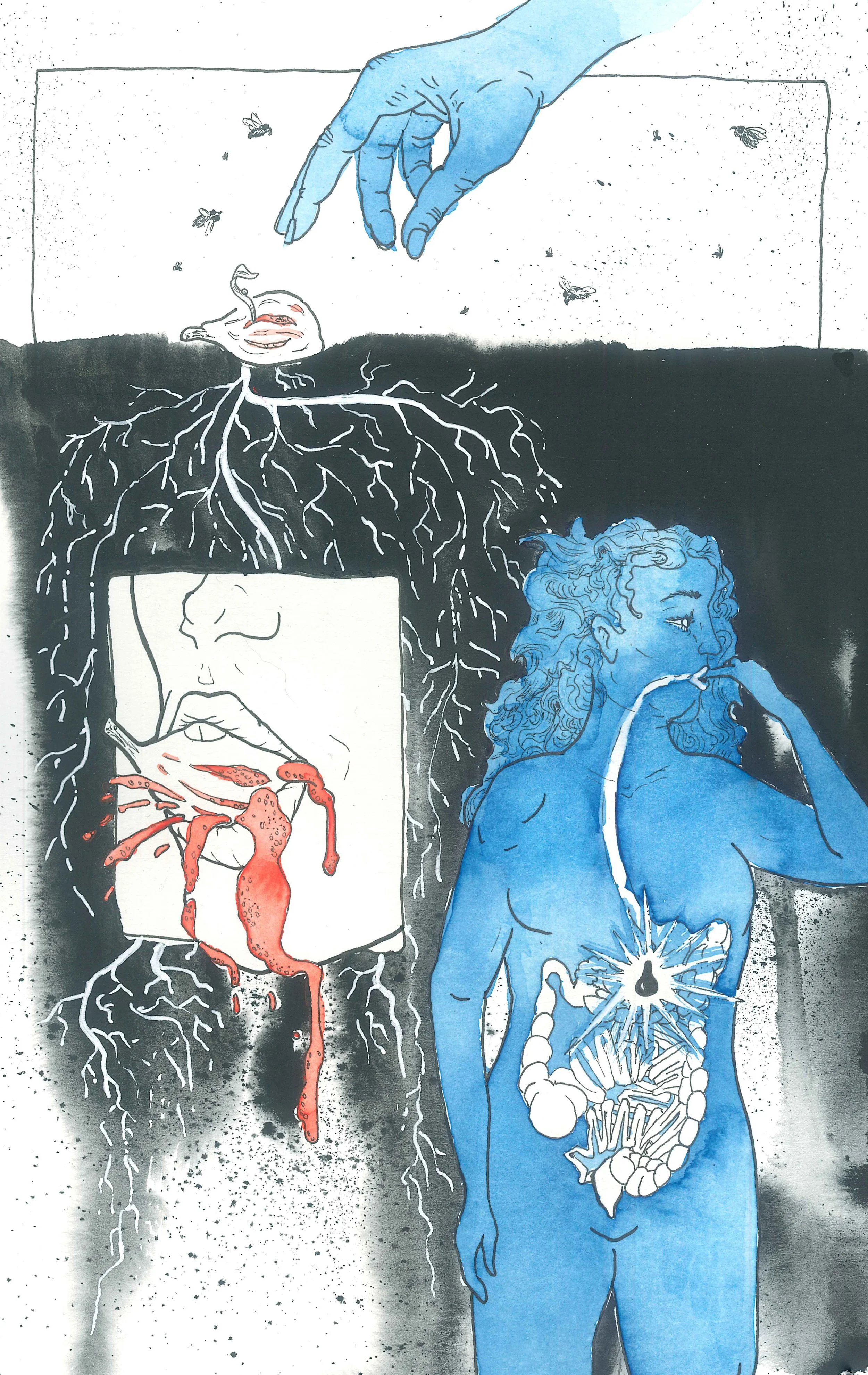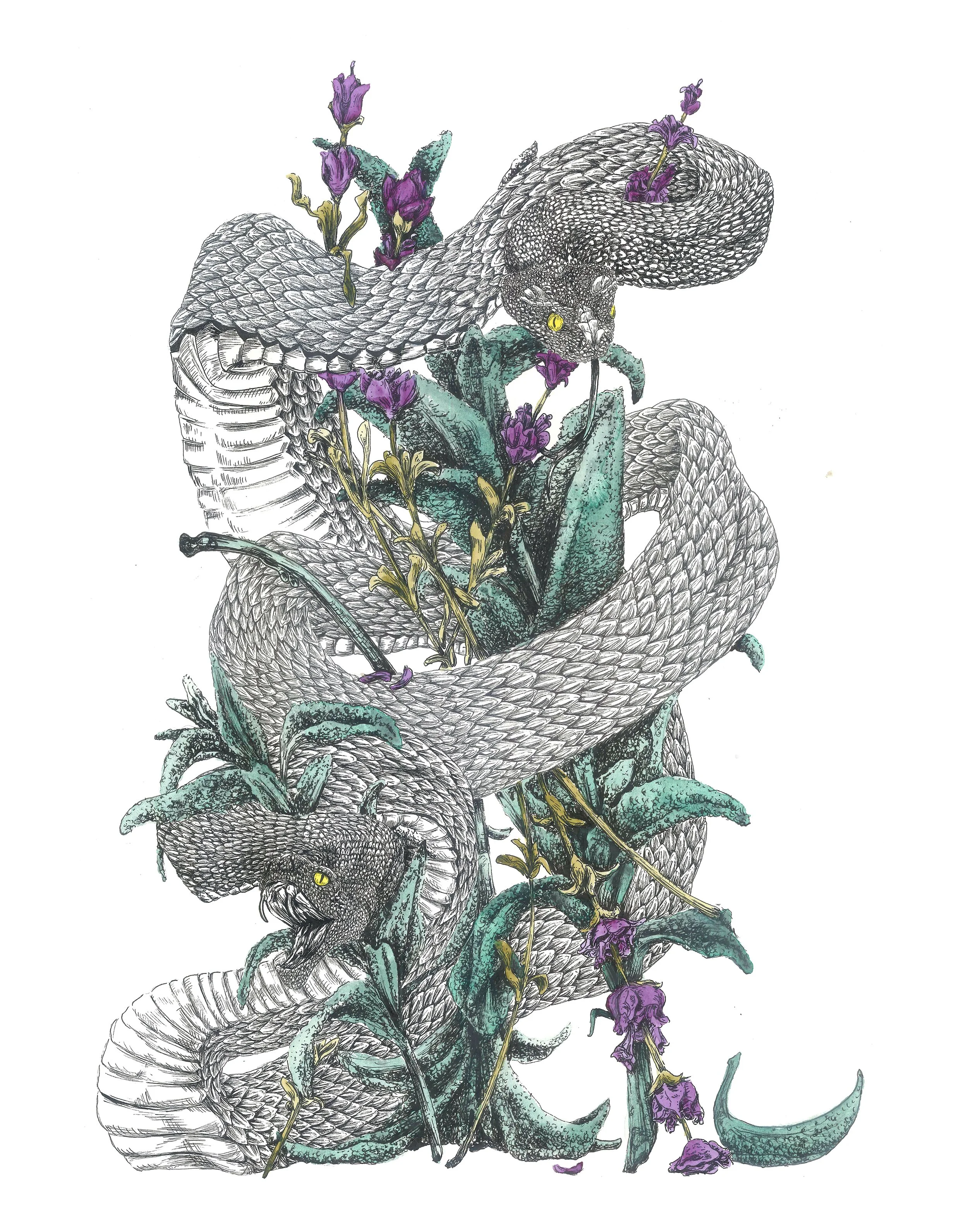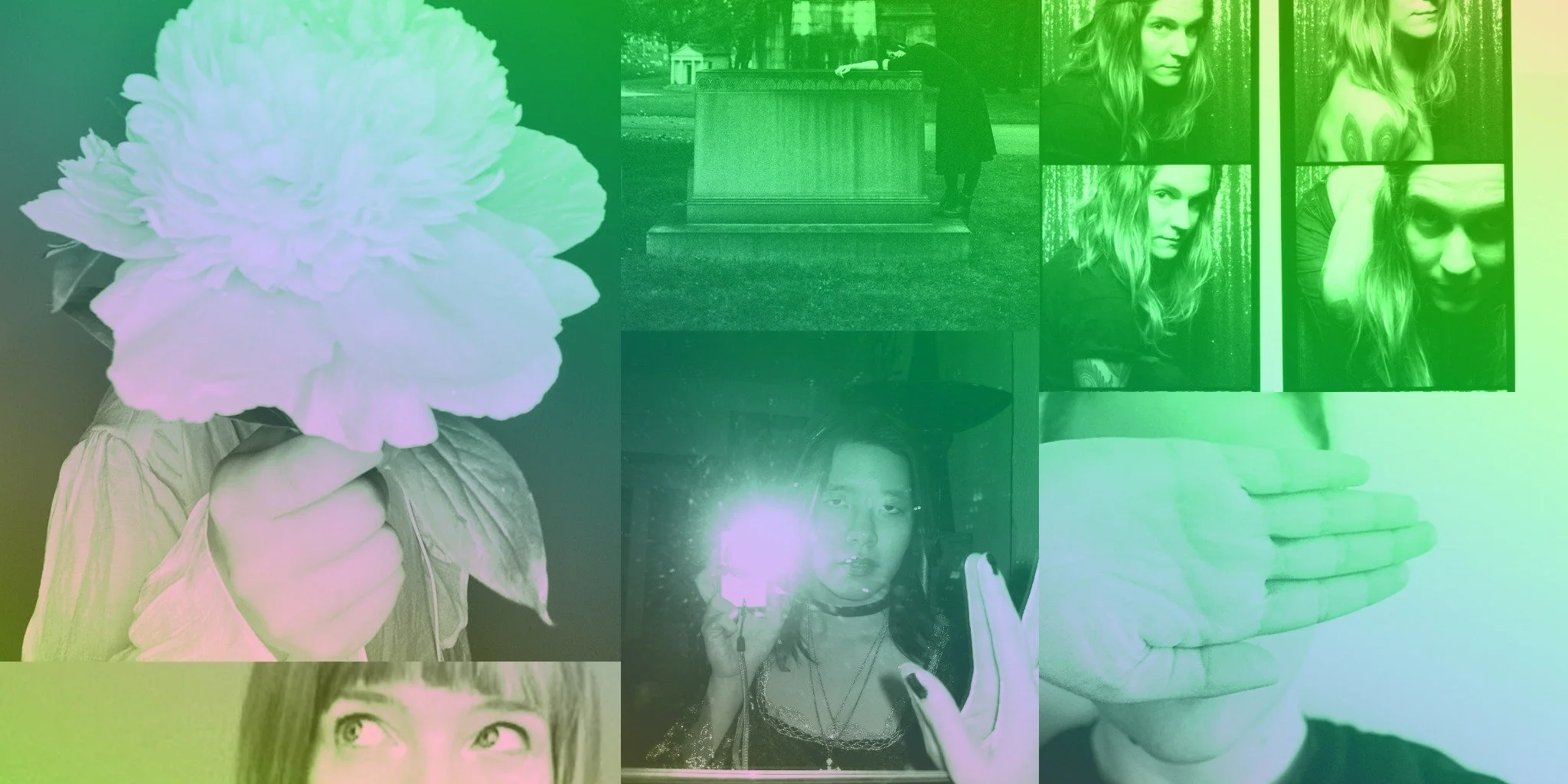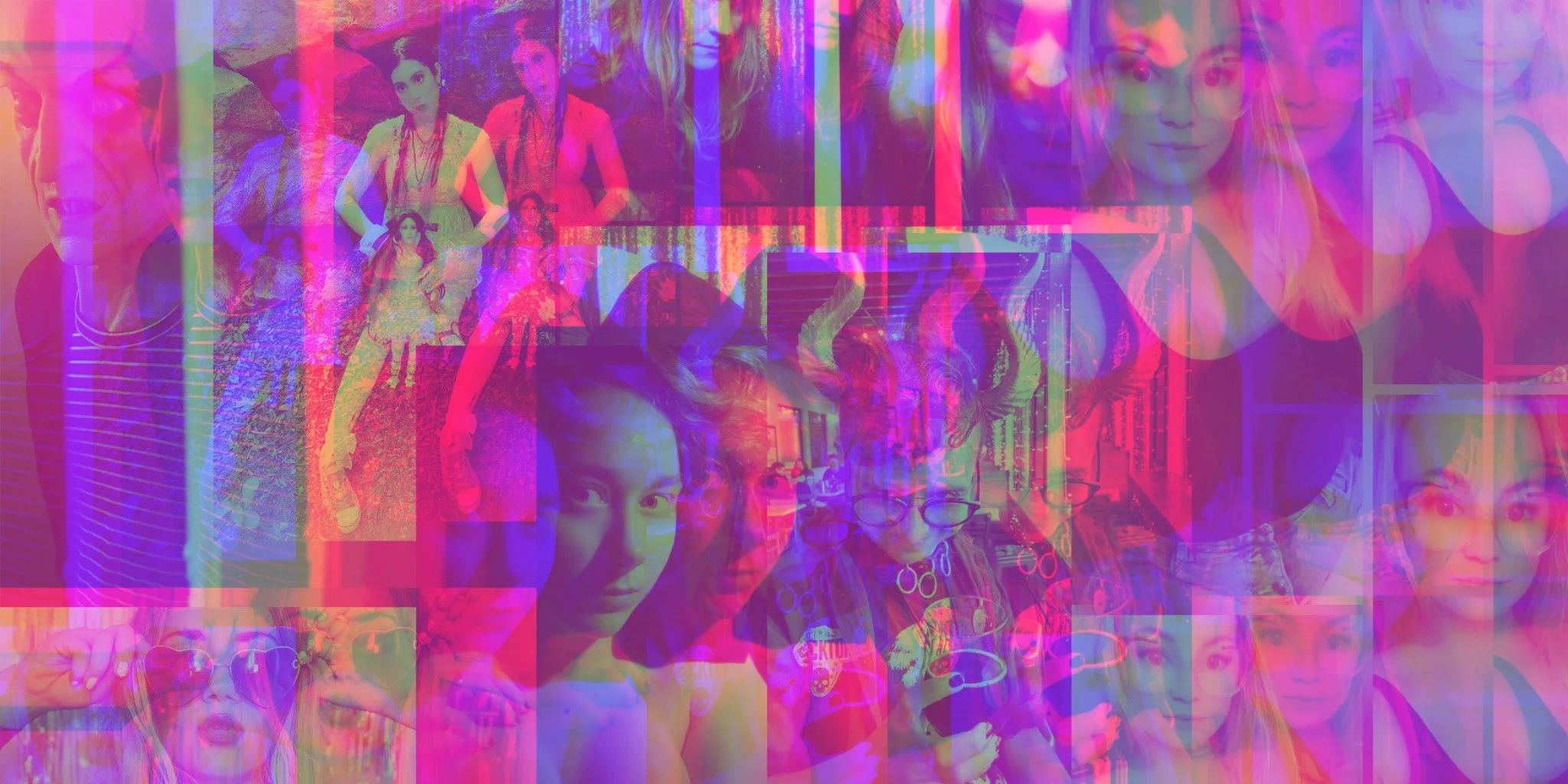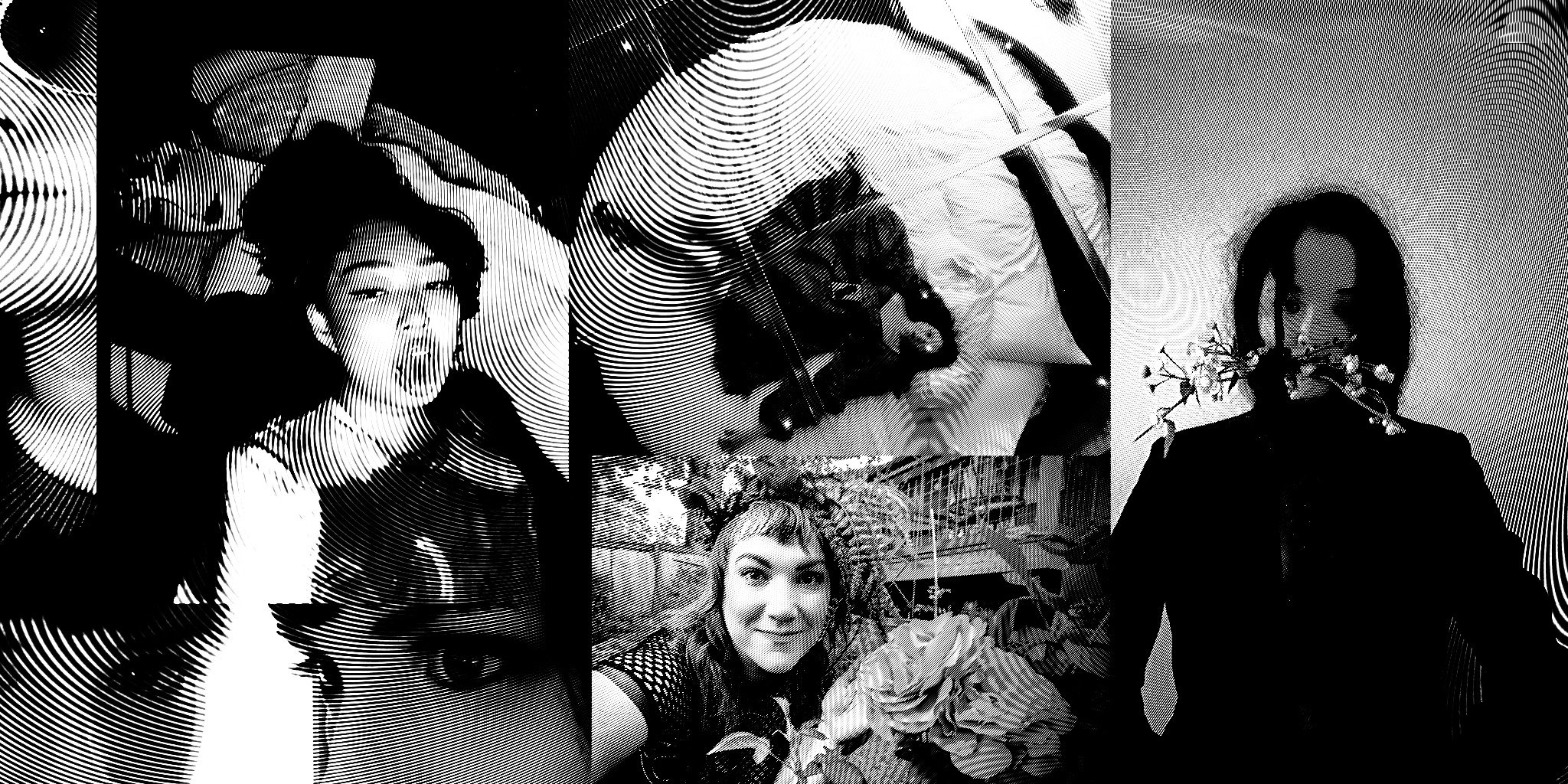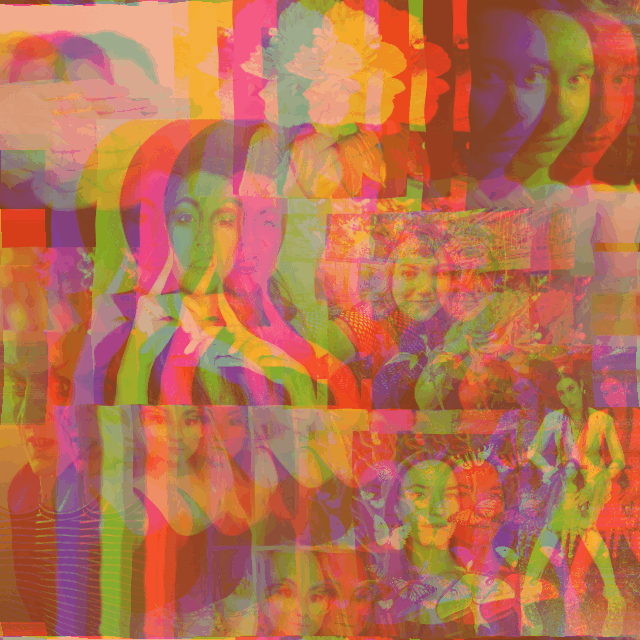A graduate of the Hollins MFA program in Creative Writing, Eve Strillacci lives and writes in NYC, where she phones her sisters irregularly and takes long walks with the moon. Her work has appeared in Sixth Finch, The RS500, and elsewhere.
Excerpts from NOIRMANIA by JoAnna Novak
JoAnna Novak is the author of the novel I MUST HAVE YOU (Skyhorse Publishing, 2017). She has written fiction, essays, poetry, and criticism for publications including Salon, Guernica, BOMB, The Rumpus, Conjunctions, and Joyland. She received her MFA in fiction from Washington University and her MFA in poetry from University of Massachusetts Amherst. She is a co-founder of the literary journal and chapbook publisher, Tammy. She lives in Los Angeles.
A Poem by Jill Mceldowney
Jill Mceldowney is the author of Kisses Over Babylon (dancing girl press 2016). Her work can be found in journals such as Fugue, Corium, Vinyl, Ghost Proposal and others.
2 Poems by Anna Kelley
Anna Kelley is pursuing an MFA in poetry at Syracuse University. She is a reader for Salt Hill and moonlights as a skater for Assault City Roller Derby. Her work has appeared or is forthcoming in Cherry Tree, Literary Orphans, Up the Staircase Quarterly, CICADA, Split Lip Magazine, and others.
2 Poems by Margaret Ann Graber
Margaret Ann Graber is a poet from the Midwest. She holds an MFA from Southern Illinois University and a BA from Indiana University. A Luminarts Cultural Foundation Fellow in Creative Writing, her poems have appeared or are forthcoming in The Louisville Review, Southern Indiana Review, The Adroit Journal, Pittsburgh Poetry Review, Hobart, and elsewhere. Find her online at maggiegraber.com.
3 Poems by Kat Finch
Kat Finch is a poet living and working in Ann Arbor as a letterpress printer and lecturer at the University of Michigan. She received her MFA in poetry at the same institution, and her poetry may be read at Black Warrior Review, The Literary Review, and Inter|rupture, among others.
A Poem by Lisa Marie Basile
Lisa Marie Basile is an editor, writer and poet living in NYC. She is the founding editor-in-chief of Luna Luna Magazine and the author of APOCRYPHAL (Noctuary Press, 2014), as well as a few chapbooks: Andalucia (Poetry Society of New York), War/Lock(Hyacinth Girl Press), and Triste (Dancing Girl Press). Her book NYMPHOLEPSY (co-authored with poet Alyssa Morhardt-Goldstein), was a finalist in the 2017 Tarpaulin Sky Book Awards. Her poetry and other work can be or will be seen in PANK, Spork, The Atlas Review, Tarpaulin Sky, the Tin House blog, The Huffington Post, The Rumpus, Rogue Agent, Moonsick Magazine, Best American Poetry, Spoon River Poetry Review, PEN American Center and the Ampersand Review, among others.
InGretel by Peter Longofono
Peter Longofono's poems have appeared in H_NGM_N, fields, Luna Luna Magazine, Public Pool, and Tenderloin, among others. He edits reviews for Coldfront and makes music with TH!CK. His chapbook, CHORDS, was published in March 2016 by the Operating System. He lives in Brooklyn.
3 Poems by Kiki Petrosino
Kiki Petrosino is the author of three books of poetry: Witch Wife (forthcoming in 2017), Hymn for the Black Terrific (2013) and Fort Red Border (2009), all from Sarabande Books. She holds graduate degrees from the University of Chicago and the University of Iowa Writer's Workshop. Her poems and essays have appeared in Poetry, Best American Poetry, The New York Times, FENCE, Gulf Coast, Jubilat, Tin House and on-line at Ploughshares. She is founder and co-editor of Transom, an independent on-line poetry journal. She is an Associate Professor of English at the University of Louisville, where she directs the Creative Writing Program. Her awards include a residency at the Hermitage Artist Retreat and research fellowships from the University of Louisville's Commonwealth Center for the Humanities and Society and the Virginia Foundation for the Humanities.
3 Poems by Lillian Kwok
Lillian Kwok is originally from Philadelphia, and now lives in Honolulu. She has a chapbook published by Awst Press and one forthcoming from Dancing Girl Press. Her work has been published in the Waxwing, the Cortland Review, Paper Darts and other journals. She holds an MFA in writing from Vermont College of Fine Arts.
2 Poems by Denise Jarrott
Denise Jarrott grew up in Iowa. Her work has appeared or is forthcoming in The Volta, jubilat, Pith, La Vague, small po[r]tions, and elsewhere. She is the author of the chapbook Nine Elegies, forthcoming from Dancing Girl Press.
2 Poems by Emily Corwin
Emily Corwin is an MFA candidate in poetry at Indiana University-Bloomington and the Poetry Editor for Indiana Review. Her writing has appeared or is forthcoming in Gigantic Sequins, Day One, Hobart, smoking glue gun, and Word Riot. She has two chapbooks, My Tall Handsome (Brain Mill Press) and darkling (Platypus Press) which were published in 2016. You can follow her online at @exitlessblue.
Miriam by C. Samuel Rees
C. Samuel Rees has been featured in The Fairy Tale Review, The Account, Bridge Magazine, Borderlands: Texas Poetry Review, and JMWW, among others. Most recently his poem "Guten Abend, Gute Nacht" was nominated for a pushcart prize and his poem "Tanning Process" is included in the anthology The Dead Animal Handbook (University of Hell Press). C. Samuel is a creature who subsists on a steady diet of horror films and books on desert ecology.
An Interview with Artist M. Laverick (Momalish)
"Mantle" by M. Laverick (Momalish)
M. Laverick (aka Momalish) is an illustrator interested in fun, vibrant concepts, as well as the unsettling and macabre. They grew up with horror movies, Japanese animation, and teen sitcoms from the '90s, resulting in a hyper-idolisation of pop and graphic imagery, as well as an enthusiasm for all things scary and occult — influences which take precedence within their work. Their portfolio can be found here, and their latest work can also be seen via Twitter (@momalish) and Instagram (@badwitches). Their storefront, Bad Witches Emporium, will soon be moving to a new location.
How do you describe your aesthetic when you’re thinking about it on your own terms (as in, not for a professional byline)?
I struggle so much with how I want to present myself, so this is a tough question! Perhaps “Texas Chainsaw Daria.”
How did you come into illustration?
I did illustration throughout various arts courses and found it super rewarding. I’ve been putting my art online since I was a teenager and I just sort of carried on doing it as I went through college, making connections and taking jobs as I posted more. I just really enjoy drawing and making pictures, so doing this as a line of work has come very naturally to me.
"Dinner for Two" by M. Laverick (Momalish)
You've mentioned that you grew up with horror movies, Japanese animation, and teen sitcoms from the ‘90s. Could you talk about how these sources have influenced your work, both visually and conceptually?
When I was growing up, teen sitcoms like Saved by the Bell and Clarissa Explains it All were all on reruns. Those shows were on the cusp of the ‘80s/’90s so I was watching a lot of shows stylized in those eras. When I was little I used to draw my “dream room” a lot, which looked a lot like Clarissa’s, actually. Now, I use my room as form of expression — I collect figures and trinkets to decorate it with, so it makes sense that I love giving environments in my work the same sense of personalization. By paying attention to small details within the environments my characters inhabit, it’s sort of a progression from when I used to draw Clarissa’s room.
"Summon" by M. Laverick (Momalish)
I also loved the hyper stylized drawings of the manga and anime I was consuming as a kid. It was very different to anything else I had been exposed to, and I really connected with it. My teachers at school heavily discouraged me from replicating the style of these shows and comics, so I forced my hand into drawing in a more “western” style.
I really love the melodrama shoujo and horror comics bring to the table; Japanese artists such as Kazuo Umezu and Suehiro Maruo draw quite horrific content that is still portrayed in a rather feminine and graceful way, which is reflective of the long lashes and wide eyes of the magical girls I grew up idolizing the styling of. As my interests expanded, I think I developed a style that happily married those stylistic elements I admired with a more diversified range of influences.
One thing I do is try and mediate between something nostalgic to me, and horrific. The nostalgia comes from things I have grown up consuming and being inspired by like those sitcoms and anime. I love movies like It Follows, which exists in a timeless universe, and managed to portray an atmosphere that is unsettling and oppressive but takes place in an otherwise comforting and familiar environment. That combination is something that really inspires me, and I try to convey a similar feeling in my work. I have very prominent memories of my friends and I sitting around, talking about horror movies and sharing ghost stories. We loved scaring each other. So maybe I’m making illustrations that are, in a sense, these scary stories or ideas that have been brought into the rooms we’d tell them in.
"Dysphoria/Dysmorphia" by M. Laverick (Momalish)
Also, of course we have to ask — what are some of your favorites in each category?
Anime/Manga: I really like Evangelion. At face value it’s about giant fighting robots. But there’s a narrative alongside of it, which I found to be one of the most realistic and intuitive depictions of depression and mental health troubles I’ve seen. I also think the style it was drawn and animated in was quite dated a few years ago, but is now making a resurgence as part of the popularity of ‘90s aesthetics on the internet.
Anything by Junji Ito is also an essential for fans of horror. His works are either hilariously over-the-top with how disgusting and wild they are, or completely terrifying and haunting. He has drawn so many short stories that it’s easy to find something you feel like reading.
Sitcoms: The Secret World of Alex Mack was a great teen sitcom. She was hit by a chemical truck on her first day of school, which gave her Special Powers. I remember she used to glow when she was nervous, which is so relatable... except I sort of grow more of a red colour, shake, and perspire horrifically when I’m anxious.
Horror Movies: Suspiria is a major favorite horror for me: I love Dario Argento’s bright colour palettes and lighting! It’s is a little “off” with the acting and storyline, but I felt like it made for this really surreal, nightmare-like feeling which I love. The Japanese horror House does something very similar — and it also has a bunch of fun rotoscoped and practical effects. It looks like somebody took a teen melodrama, cut it into a haunted house movie, and drew all over it to make something wicked. I love it!
"Items" by M. Laverick (Momalish)
Occult and horror imageries are becoming increasingly popular in mainstream culture, and seem to be thriving particularly in online communities like tumblr and Etsy. What is it that draws you to this imagery, and why do you think that it is having a revival in pop culture (and art) right now?
Honestly, I think a lot of the popularity of witchy stuff amongst girls is an expression of feminism. There is a natural link between witchcraft and feminism that a lot of people make, and enjoy playing on. Having magic means you can do anything and so witchcraft has become, for many, a symbolism of independence and strength within femininity that I think appeals to people very much at the moment.
I’ve also noticed that now a lot of modern and successful horror movies have been directed by women. A Girl Walks Home Alone at Night, The Love Witch and The Babadook have been three of my favorite horrors of the last five years — all directed by women. Being a feminist and fan of horror movies has always been a paradox for me. The horror genre has always involved women, but they’ve rarely ever been in control; they are typically the subjects of shallow peril and exploitation. But I think when you have a woman writing or directing horror, there is a more empathetic and humanistic portrayal of female characters. People like it — and I think the media are slowly waking up to that. Of course, I don’t mean to say that everything is about feminism — I think that’s just a part of it. Perhaps the Illuminati are real after all.
"Pomegranate" by M. Laverick (Momalish)
Some of your works use a particularly "girly" pastel palette and iconography. This meshes with a pastel goth aesthetic that seems to have found a place in social media and fashion communities. Could you speak about this choice to use a less-traditional palette for horror and gothic imagery, and to emphasize what many might think of as the “femme” elements?
I rarely consciously think about making my work one way or the other. I think my colour choices are just things that have seeped unconsciously into my work from inspiration and interest alike. I try to stay away from using the words “pastel goth” to describe my work because I feel like it conjures quite a gimmicky and ubiquitous aesthetic I’m not a huge fan of. But I do think that the prevalent themes and colour choices of my work will inevitably be attributed to that aesthetic!
I suppose it comes from trying to use soft and comforting palettes to portray an atmosphere that is soothing, and introducing something dark or “off” which gives a sense contamination to a scene. In my illustration “Dysmorphia/Dysphoria,” I wanted to achieve a feeling of familiarity conjured by the dressing table adorned with feminine and girly imagery, but then introduce something darker by hiding objects that allude to the title amongst that, as well as the more obvious horror elements. Essentially, I’m emphasising soft, feminine elements in order to evoke a contrasting feeling of corruption.
"Witch" by M. Laverick (Momalish)
Who is your favorite teen witch, and why?
Does Moaning Myrtle from Harry Potter count? It’s probably a boring choice given all I’ve talked about… but I think crying all day in the shitter is very relatable.
3 Poems by Amy Jo Trier-Walker
(click)
Amy Jo Trier-Walker lives and works on a tree and herb farm in Indiana and is the author of two chapbooks: Trembling Ourselves into Trees (Horse Less Press, 2015) and One Winter Night in the Pines (The Dandelion Review, 2016). She is the winner of the 2016 Permafrost New Alchemy Contest, and her work can be found in New American Writing, Caliban online, Salt Hill, Tupelo Quarterly, and inter|rupture, among others.
2 Poems by Chet'la Sebree
(click)
Chet’la Sebree, a Delaware native, is a graduate of American University’s MFA in Creative Writing Program. She has received fellowships from Bucknell University's Stadler Center for Poetry, the Vermont Studio Center, and the Richard H. Smith International Center for Jefferson Studies. Her poems have appeared or are forthcoming in jubilat, Gulf Coast, Crazyhorse, BOAAT, and Monticello in Mind: Fifty Contemporary Poets on Jefferson.
3 Poems by Catherine Kyle
(crop)
Catherine Kyle holds a Ph.D. in English from Western Michigan University. She teaches at the College of Western Idaho and writes grants for The Cabin, a literary nonprofit. She is the author and illustrator of the hybrid-genre collection Feral Domesticity (Robocup Press, 2014); the author of the poetry chapbooks Flotsam (Etched Press, 2015) and Gamer: A Role-Playing Poem (dancing girl press, 2015); and a co-editor of Goddessmode (Cool Skull Press, 2015). She also helps run the Ghosts & Projectors poetry reading series. Her graphic narratives, fiction, nonfiction, and poetry have appeared in The Rumpus, Superstition Review, WomenArts Quarterly, and elsewhere.
3 Poems by Virginia Konchan
(click)
Virginia Konchan is the author of a chapbook, Vox Populi (Finishing Line Press, 2015), and a collection of short stories, Anatomical Gift (Noctuary Press, 2017). Virginia Konchan's poems have appeared in The New Yorker, The New Republic, Best New Poets, and elsewhere.

